Ousdale Broch - The Story so Far!
Well, our first blog post in about 3 years. But there's been a bit of a 'lull' in activity recently around the world - perhaps you've noticed?
Let's not dwell on these matters, and, instead, use this as an opportunity to recap what has happened at Ousdale Burn Broch, also known as 'Allt a'Bhurg Broch'.
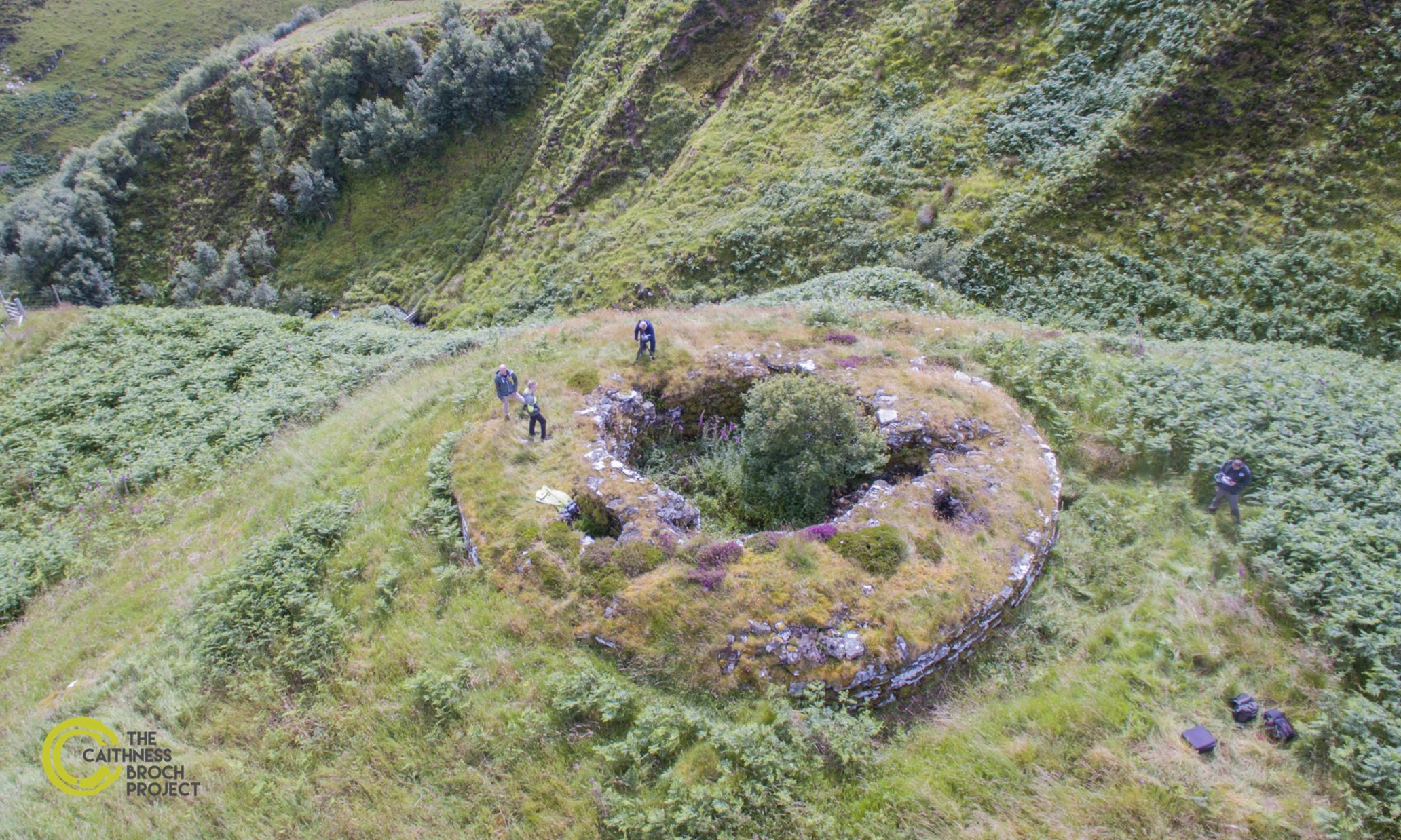
We've been interested in this broch for a number of years now. Don't believe us? Check our our appearance on BBC Landward all the way back in 2016:
(And check out the fear in Dougie Vipond's eyes around the 2:00 mark)
The Locale:
The Broch is located just barely a mile north of the Caithness/Sutherland border, just south of the quaint village of Berriedale. Situated at the bottom of a hill which overlooks the Ousdale Burn and the Allt a''Bhurg (which translated to 'Stream of the Fort'. 'Bhurg' is a derivation of 'Borg' which is old Norse for 'fort'...more on this later!), it is an impressive location, and the broch itself is quite possibly the 'best' broch in Caithness. It is now a prominent feature in the John O'Groats trail, which we highly recommend you check out.
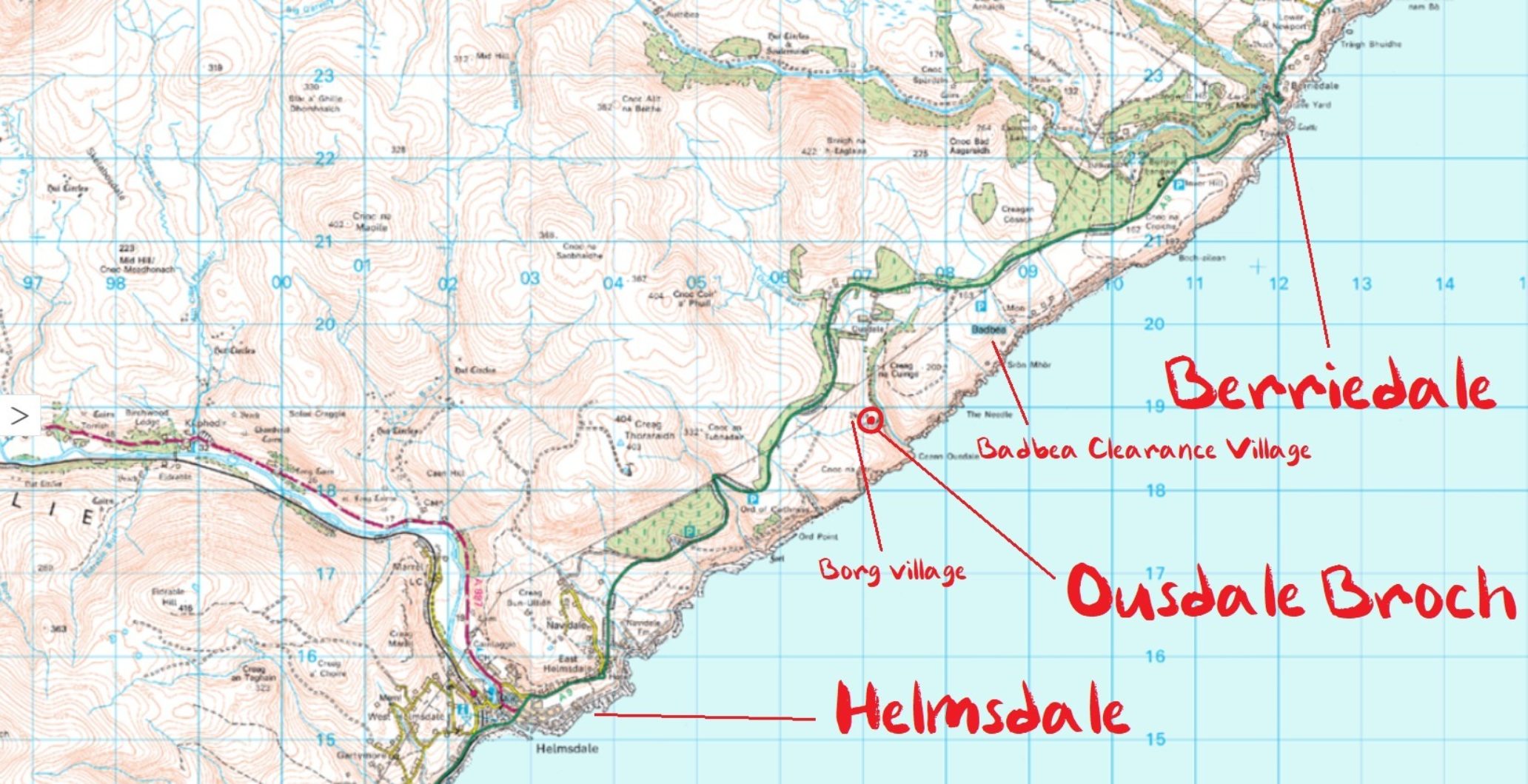
Map of the general area
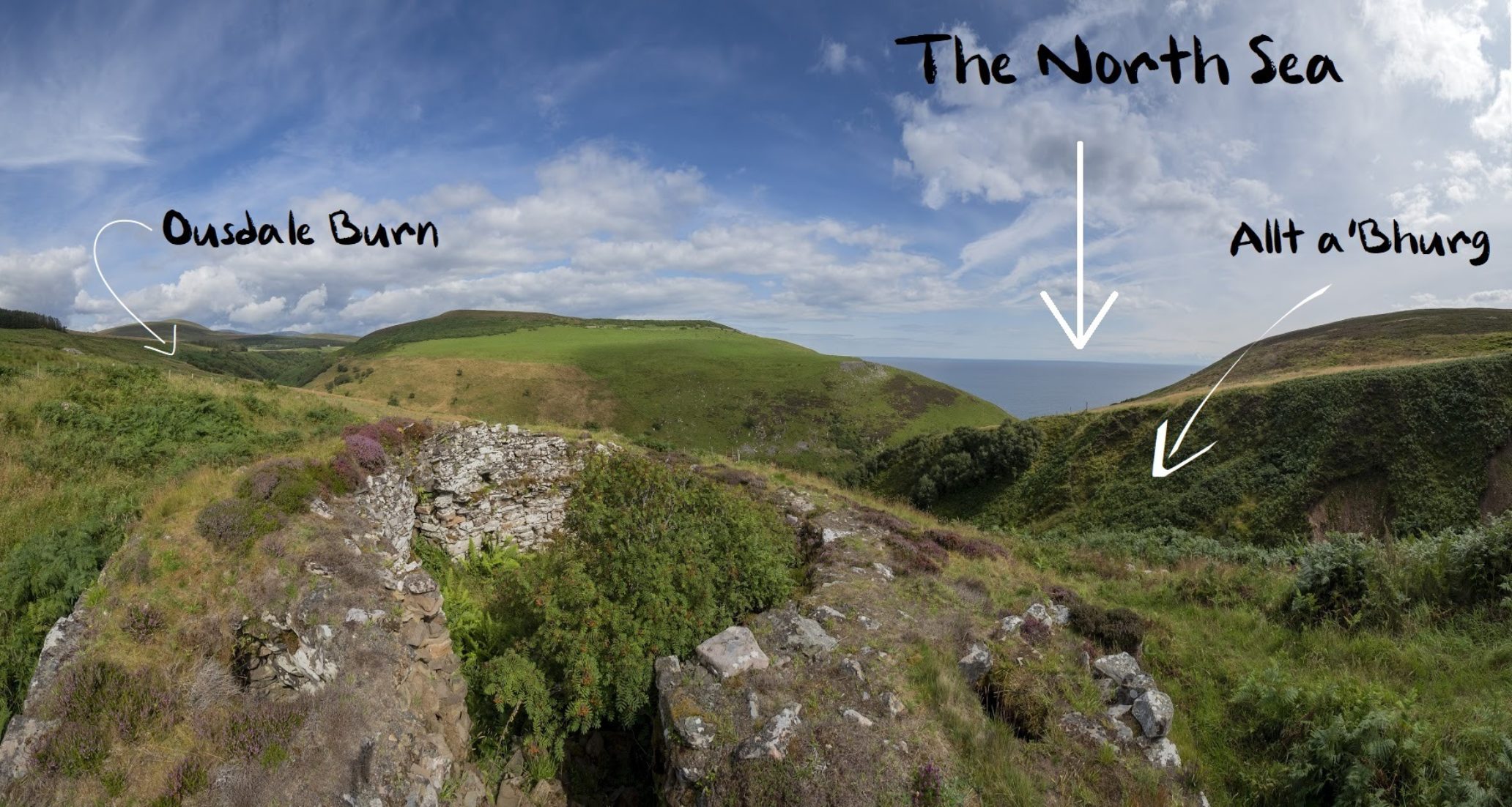
The broch in the landscape. Photo by National Geographic photographer, Jim Henderson, whom we invited around Caithness in early 2019
If your computer is up to it, then Merlinworks also produced this rather lovely 3D model of Ousdale Broch - so why not have a wee whizz around?
The Norse and Ousdale
This area is dense with archaeological remains: at Berriedale there are the traces of brochs, castles, standing stones; the Strath of Kildonan which runs through Helmsdale is littered with souterrains, hut circles and stone rows. Close to the broch are the remains of Badbae Clearance Village, but, lying even closer are the scant remains of 'Borg', a post-Medieval clearance village, but which likely goes back even further: the name 'Borg' is indeed a Norse name, and so may date back over 1,000 years.
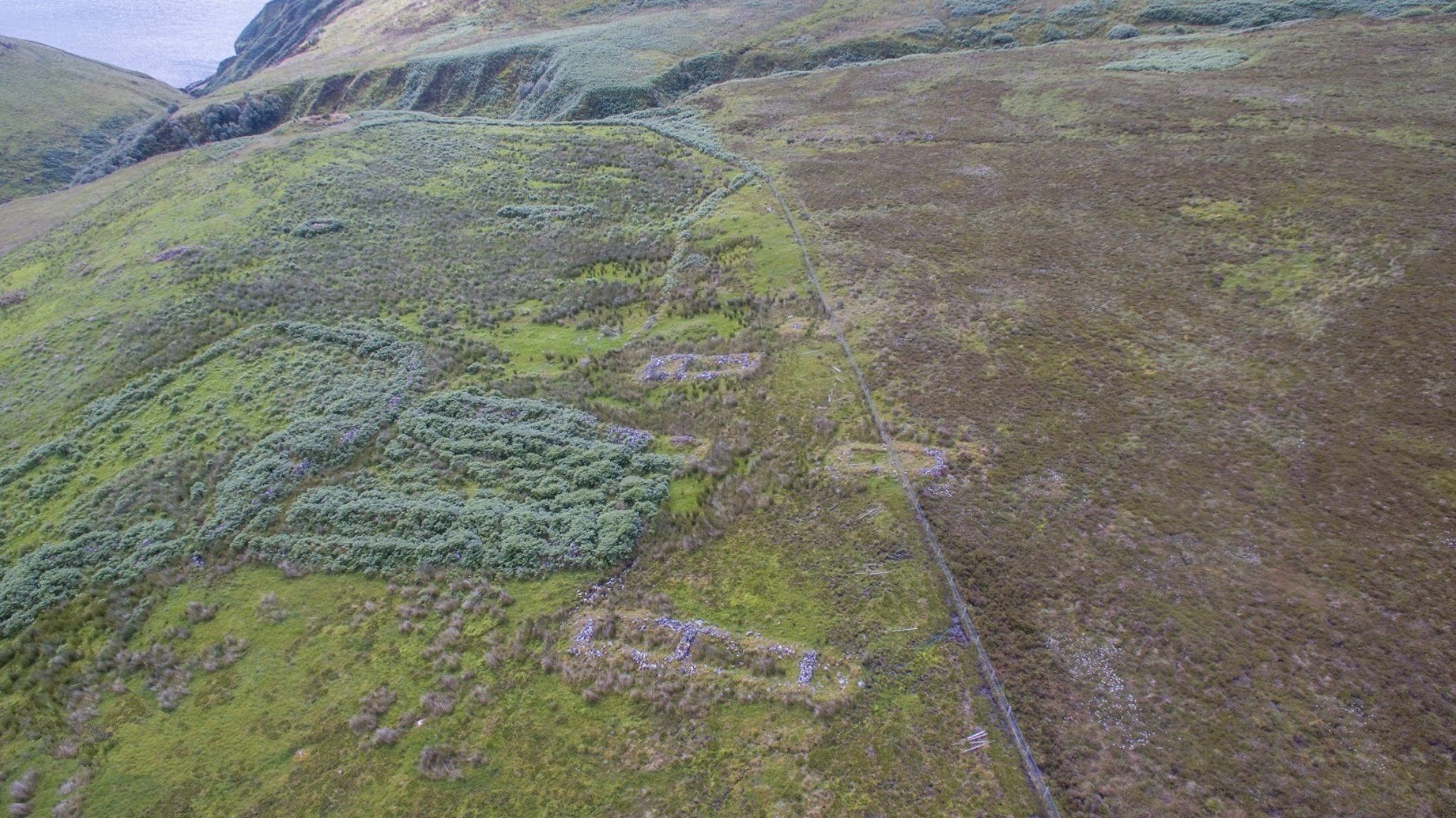
The remains of Borg village - the broch can just be seen in the background: follow the fenceline!
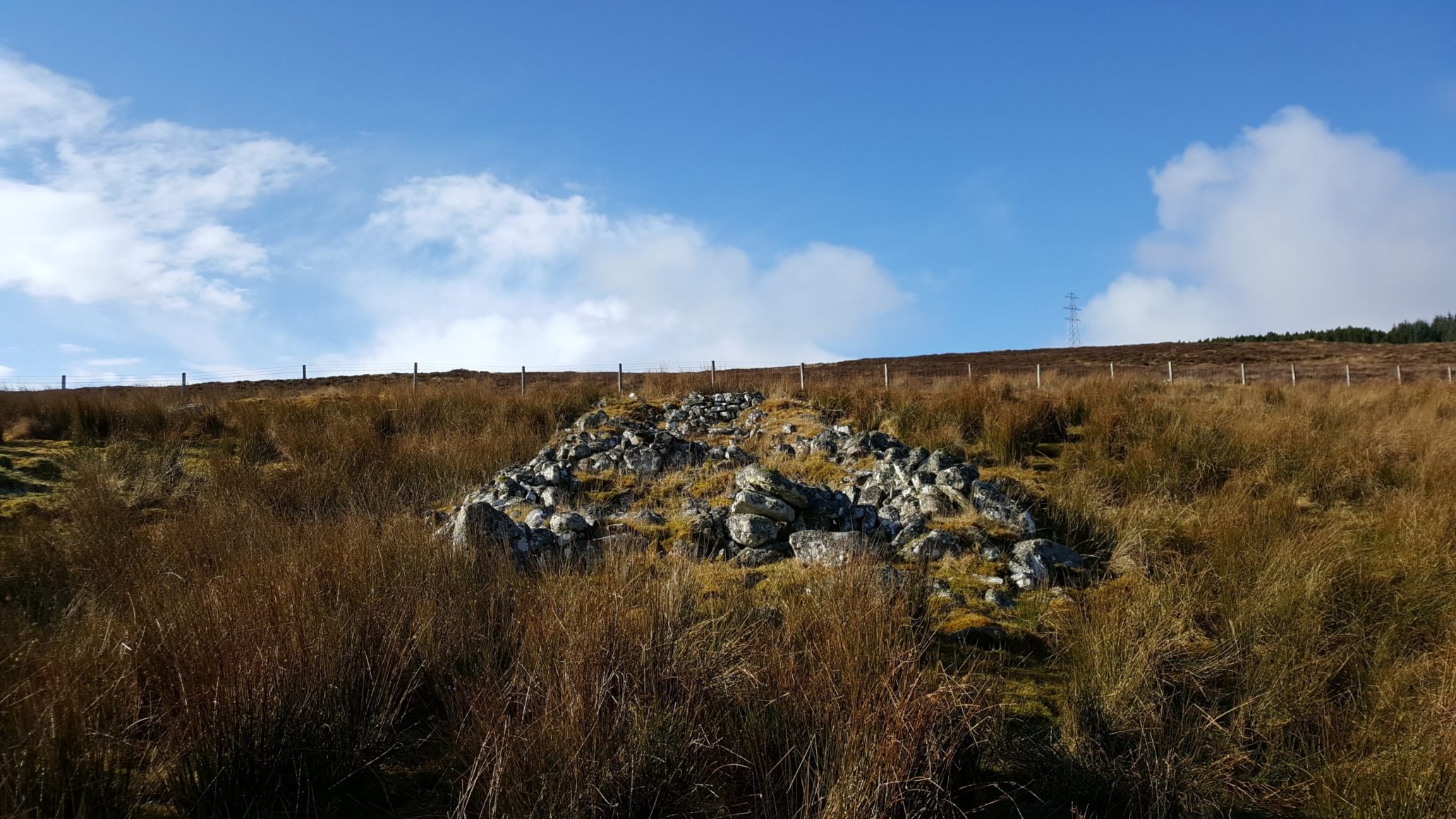
One of the longhouses at Borg
There is plenty more archaeological evidence for Norse occupation can be found across the east coast of Caithness and Sutherland. At Huna the remains of a Viking Boat was discovered, and at Freswick Links there is evidence for Norse occupation - perhaps a fish-processing factory of sorts!
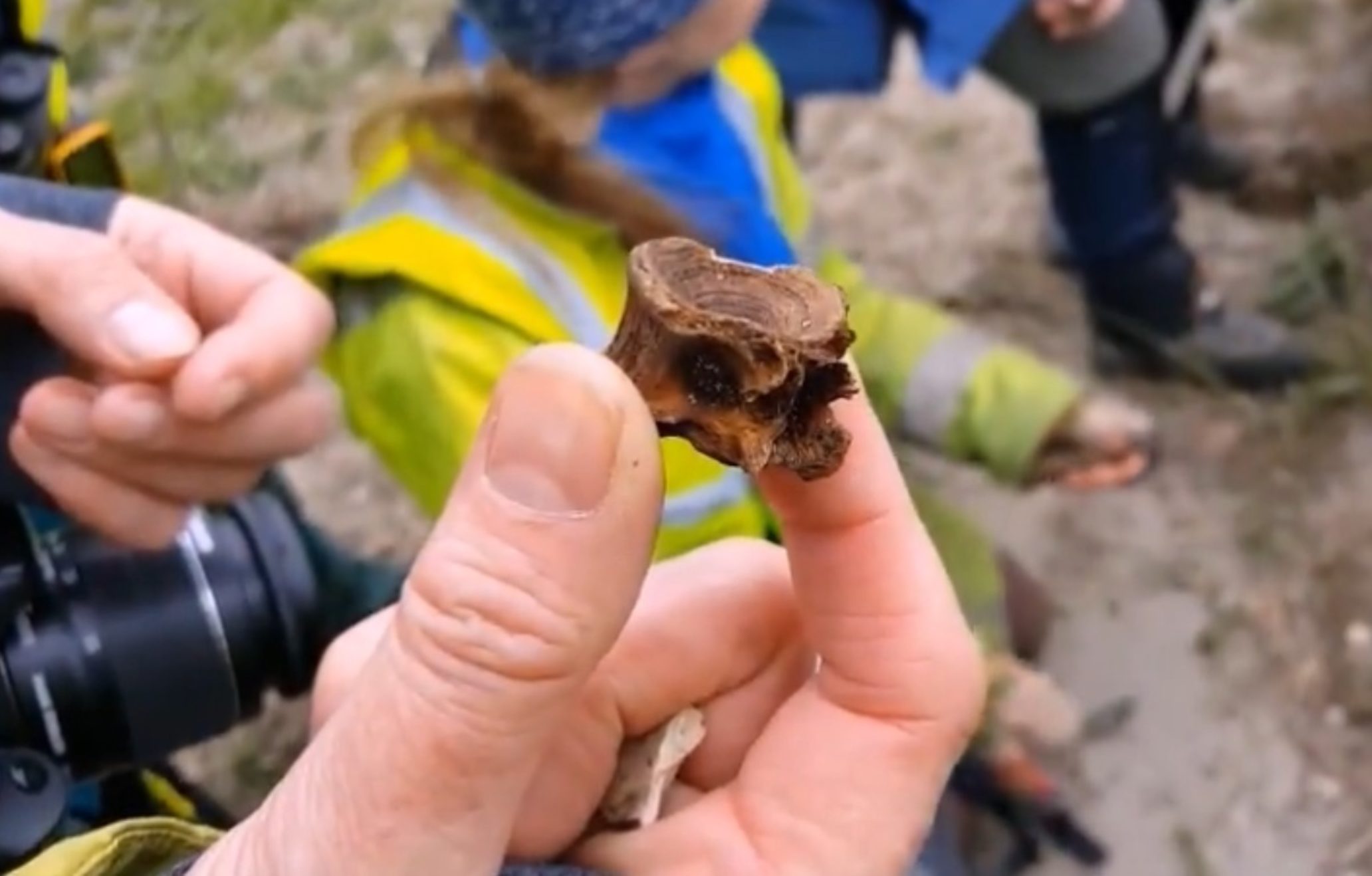
Tiny lil' bit of fish bone of some desciption, plucked off the dunes at Freswick Links. See our blogs on the coastal archaeology survey with SCAPE for more!
Certainly the place-names near to here would indicate a Norse presence: the 'dale' of Helmsdale and Berriedale, for instance, is a derivation of 'dalr', Norse for 'open valley'. Helmsdale, in this case, comes from Hjalmundal - 'Dale of the Helmet'.
At Ousdale, however, there is a fascinating historical account of Norse doing what the do best. And that of course, is: being dastardly.
The Wicked Earl Harald
According to the Orkneyinga Saga, Ousdale - known as Eysteinsdal by the Norse - was the scene of a confrontation between the William the Lion, King of Scotland, and Harald the Elder (Harald Maddadson), a Norse Jarl, who ruled over Caithness and Orkney.
Harald had asserted his rule over the area after defeating Harold the Younger (Harald Eiríksson)at the Battle of Clardon Hill near Thurso in 1198 and went on to fine, imprison and even hang the inhabitants of Thurso who opposed his rule. Bishop John of Caithness tried to plead for mercy but, cruelly, Harald had the Bishop's tongue cut off and his eyes put out!
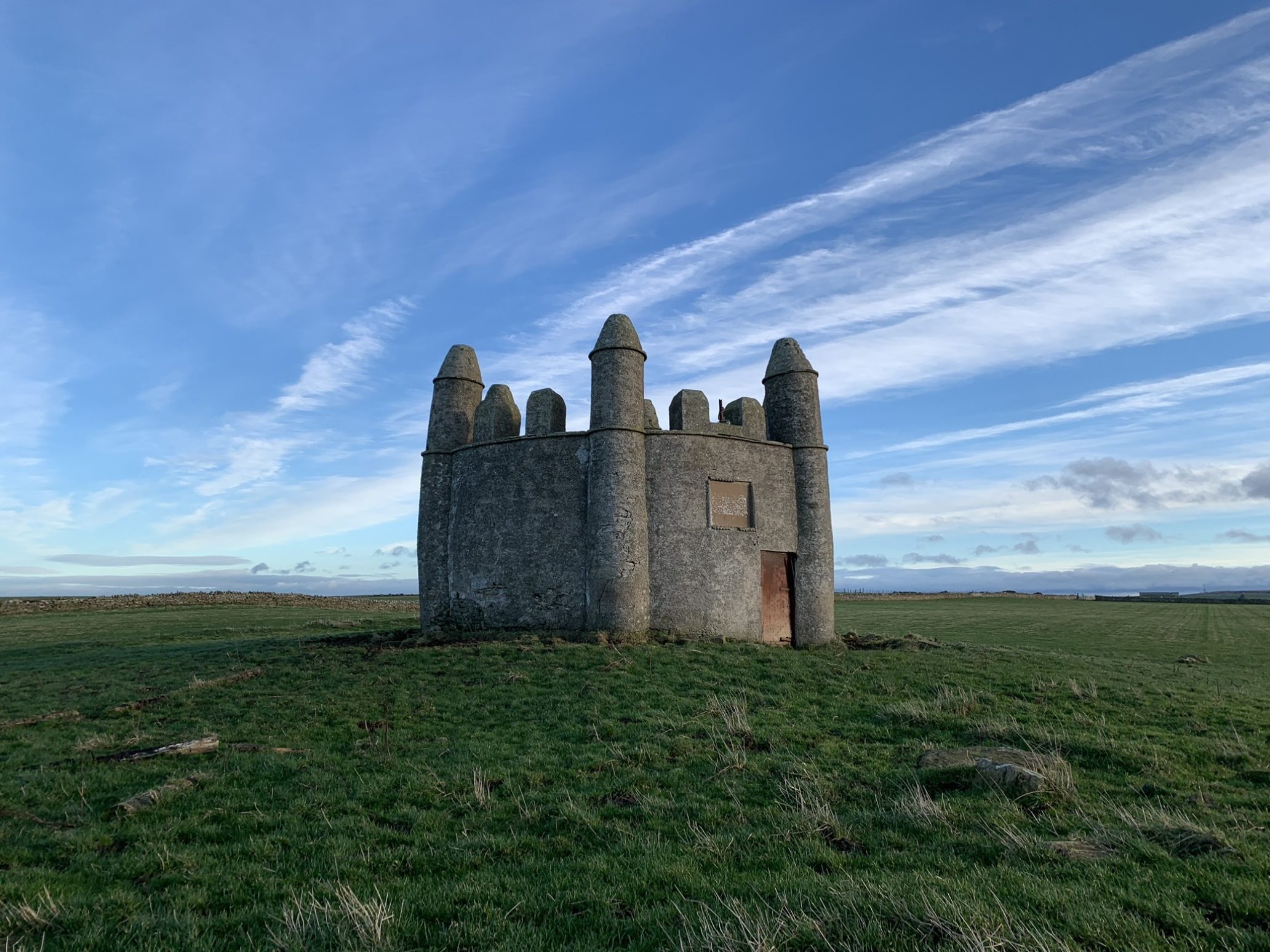
Harold's (or Harald's) Tower, near Thurso. A mausoleum for the Sinclairs of Ulbster family, it is reputedly built on top of the site of the Battle of Clardon Hill. Image and more information found at The Folly Flaneuse
Upon hearing this, King William sent an army north to keep Harold in line, eventually meeting at Ousdale in 1201, where Harald realised his army was vastly outnumbered by Williams, and sued for peace.It seems 'Wicked Earl Harald', as he is known in Caithness, never met an end befitting of his nature - he died peacefully in 1206, aged 73.
Anyway - enough of those Vikings...
Back to Borg. There is unfortunately scant information about the inhabitants of this village. However, thanks to help from the Welbeck Estate, which owns the land, and Christina Baldwin of Grey Hen's Well, we have been able to piece together something of the lives of the people of Borg. The last inhabitants of 'Borg' had left by some point in the early 19th century. We even have a photograph of two of the previous residents!
John Macleod (1795 - 1869) was a shephered who lived at Borg with his parents Donald Macleod and Mary Macleod until 1816. He married Christina Sutherland of Badbea in 1822. Of 5 sons and 6 daughters, 4 sons and 3 daughters emigrated to New Zealand. Here he is below, looking utterly terrified of photography!
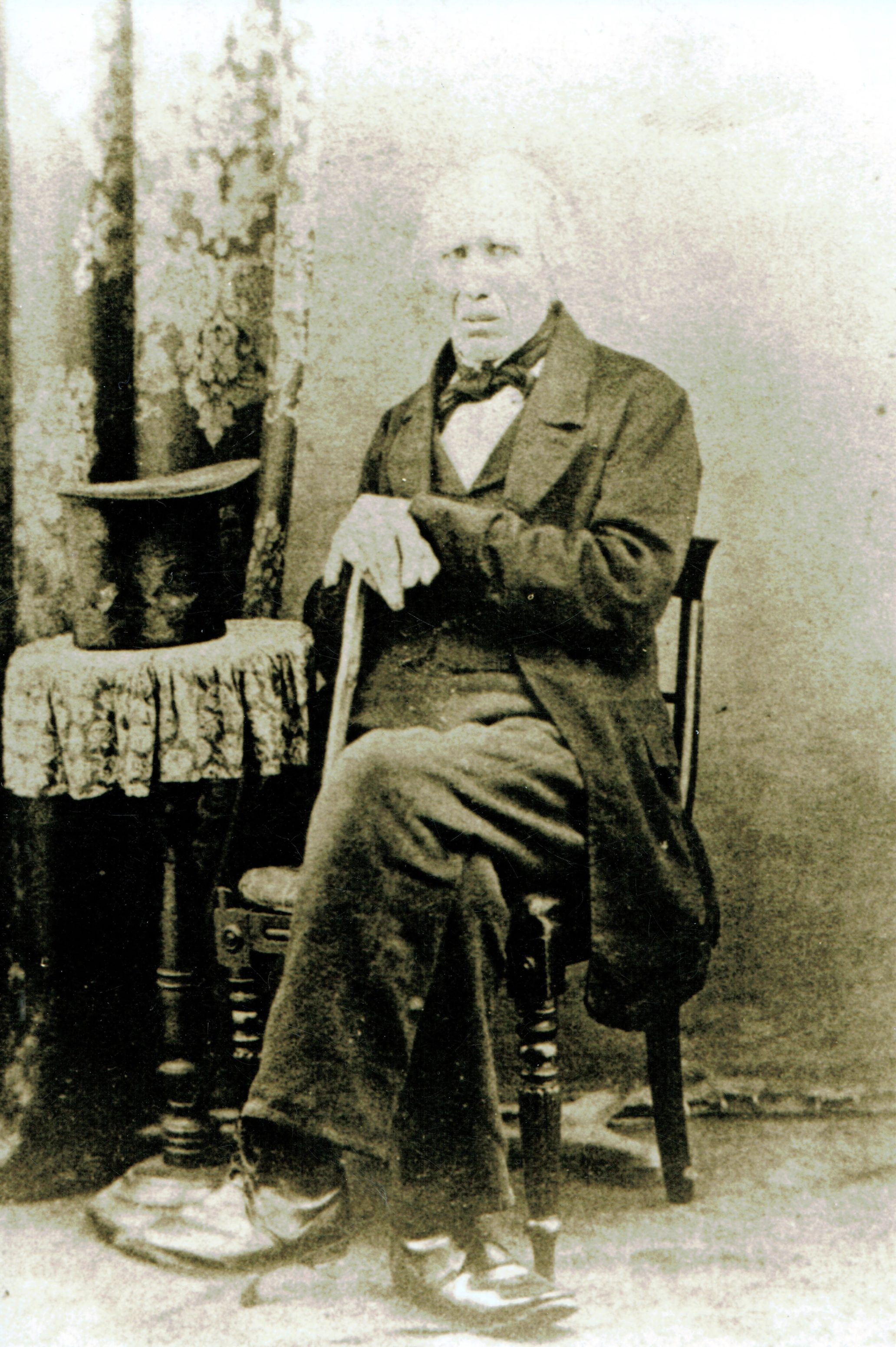
John Macleod at some point in the 1860s, when he and Christina moved to Rangag. Funnily enough, it's not far from a broch. But then again, you're never far from a broch in Caithness!
Just to the south of Ousdale, the remains of the 'old road' to Caithness can be seen. This road, which skirts the 'Ord Head', a large geological feature which juts out of the landscape, was once one of the most-feared roads in Scotland: notorious for both the steepness of the cliffs to which it clung to, but also to the robbers and bandits who traversed the Ord. James Calder, the eminent historian of Caithness, remarked that, during the 17th century:
“During all this time the peasantry of the county were in a most wretched condition. Among other evils, Caithness was overrun with thieves. In 1617 a regularly organised band of these vagabonds infested the borders of Sutherland and Caithness, where they waylaid and robbed travellers, and violated every unprotected female that had the misfortune to fall into their hands. Their principal haunt was the Ord of Caithness, a spot peculiarly adapted for their purpose. Scarce a week passed without the commission of some murder, rape, or robbery, in that quarter... A strong posse of armed men were sent out to watch the movements of the gang, and to apprehend them. In a few days nearly the whole of the miscreants were seized and imprisoned, and after a summary trial sentenced to the gallows. A gibbet was erected on the highest part of the Ord, where, without benefit of clergy, they were all hanged as a terror to evil-doers."
(1861, p.156)
There are a couple of place-names relatively nearby which indicate a place of execution and of robbery: Cnoc na Croiche, 3 miles along the coast, translates to 'Gallows Hill'.
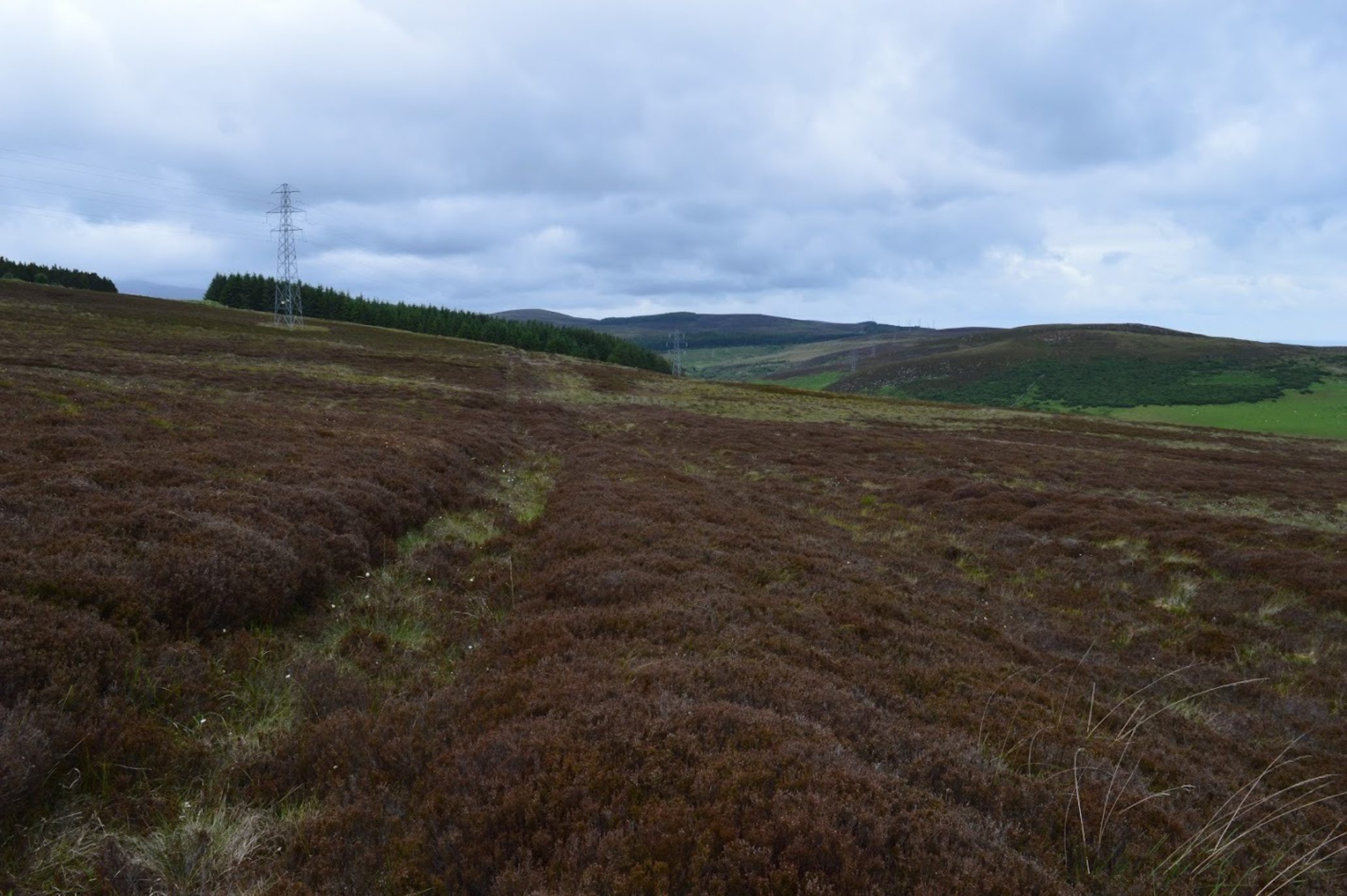
The faint outline of the old road to Caithness can still be seen
The 1891 Excavation:
The broch was excavated by Mr James Mackay of Trowbridge in Wiltshire (pictured below). He was the son of Donald Mackay, farmer at Braemore, only a few miles from Ousdale. The excavations were concluded in 1891, and the full report can be read here.
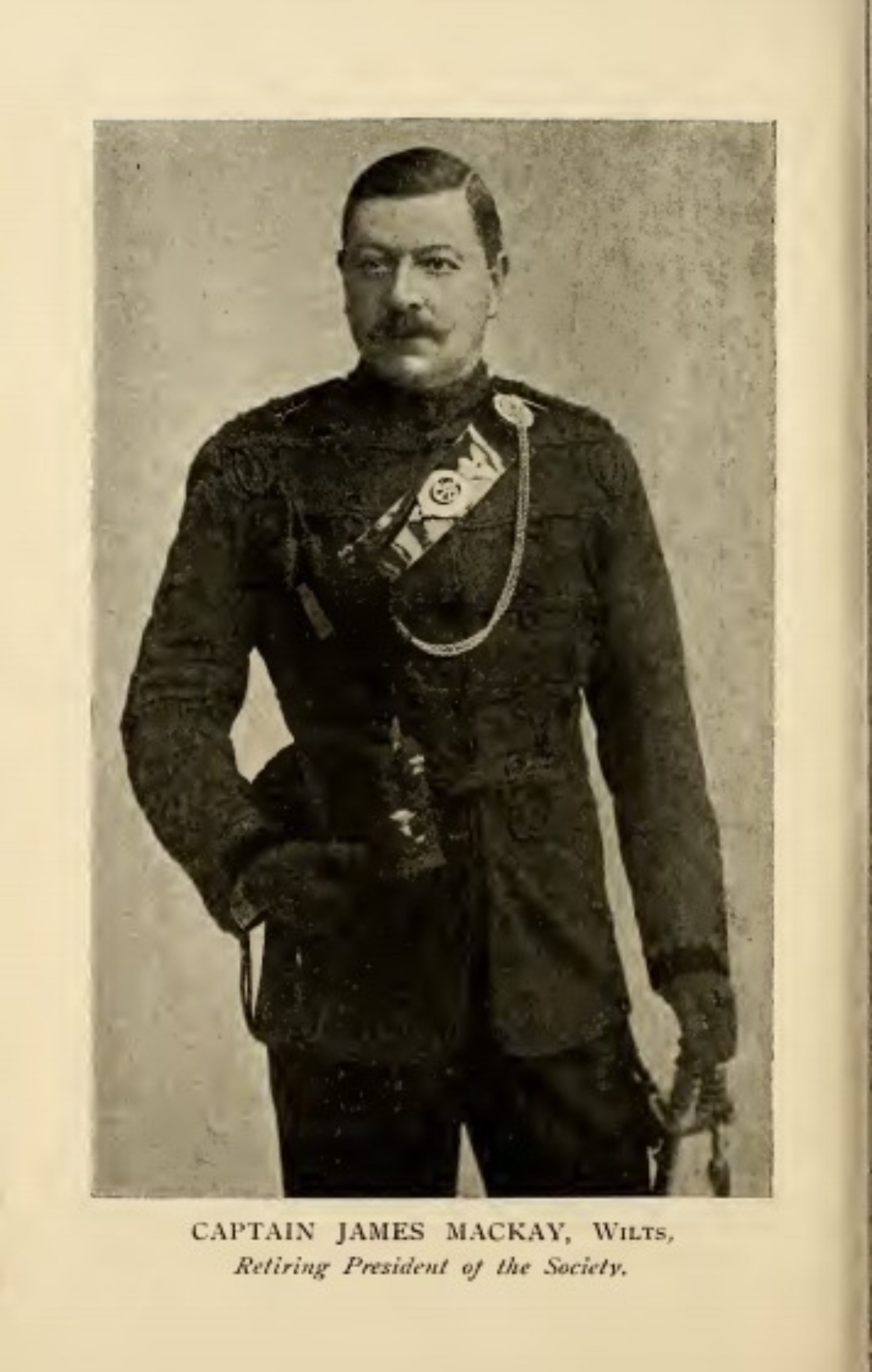
James Mackay in the 'Clan Mackay Society', 1898
Of particular interest was the discovery of a burial close to the stairwell:
"Over the entrance to the stair is a narrow opening in the wall, probably for "the purpose of lighting the stair. In clearing this a human skeleton was discovered, head downwards, roughly built in the aperture, and covered with small stones and a little earth. The cranium is in good preservation, the lower jaw, with teeth in situ, are also well preserved, but the entire right side of the skeleton is considerably decayed"
It would appear that this burial was not from the time of the brochs, however. The Orkney Herald reported, in 1891, that:
"The skeleton, which was examined by Mr Adam Mackay, of Aberdeen University, on Tuesday last week, is of much more recent data than the times of the Picts [brochs were thought to be built and inhabited by Picts], and is probably that of some victim of the clan feuds of last century, who here found a speedy burial."
Just who was this person?
It is fascinating to think that this burial may have had deeper, more tragic connotations. If this were a more modern burial - that is to say, post-Medieval - then this may have been a 'deviant' burial (a technical term for burials found in strange positions): perhaps someone who had taken their own life, or perhaps had been a nasty character - even a murderer. The fact that they were buried 'face-down' suggests something of unseemly end.
There are of course, similar deviant burials from the Iron Age, so the idea that it was an Iron Age burial can't be discounted.
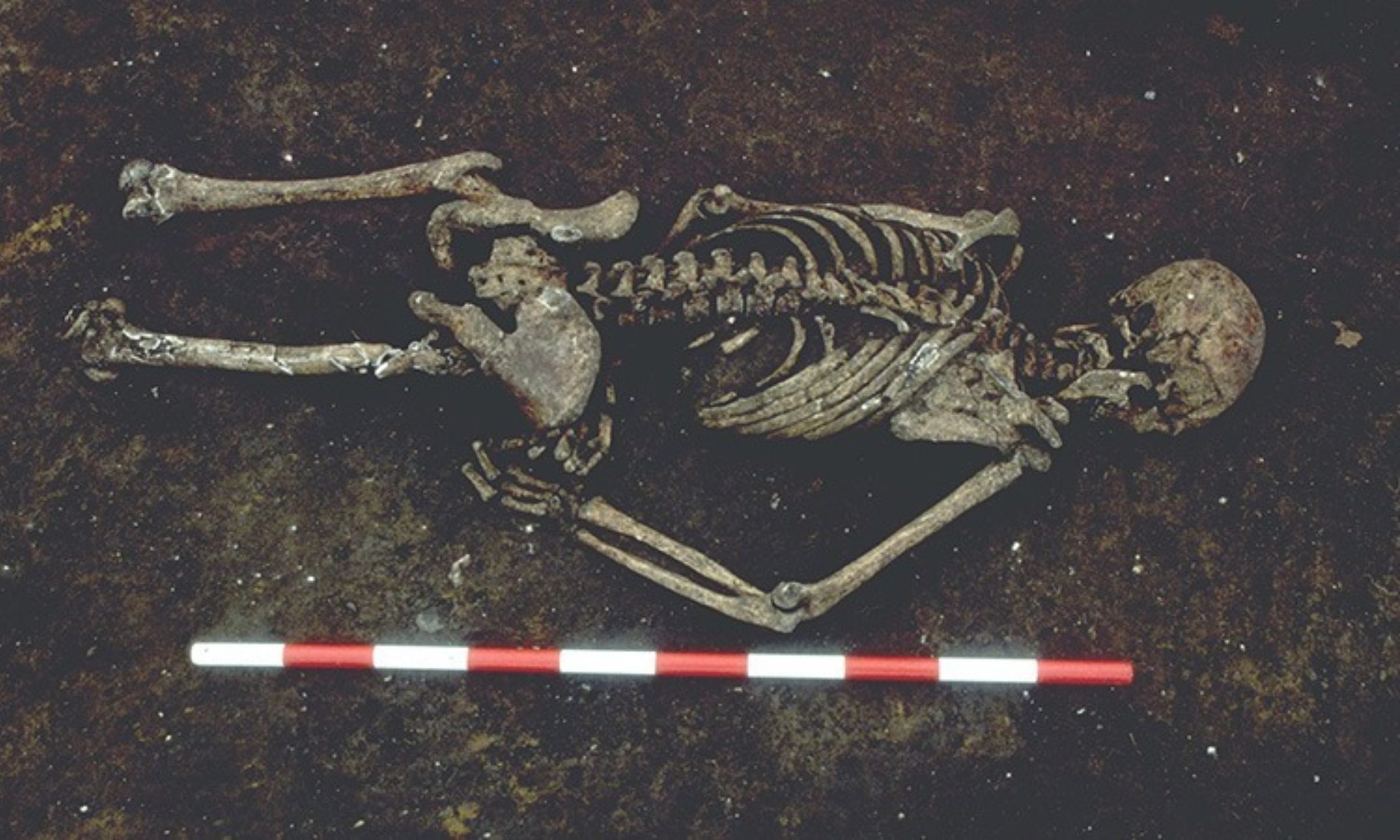
An example of a 'deviant' burial, from History Today
It would be wonderful to know more about this - but sadly the bones appear to be lost. We had contacted the Osteoarchaeology department at the University of Aberdeen but sadly, nothing appears to have survived of this skeleton - as a possible post-Medieval burial, it was likely reburied.
Another interesting point about this broch is that the excavation is the reason why the broch required consolidation and conservation. The excavation had dug so deep and so intrusively, that Mackay felt it necessary to make some modern amendments to the structure to support it:

This 'strengthening' was most visible in the form of a buttress in the inner part of the broch, between the entrance and the cell - and so this is where the conservation efforts, in earnest, began.
Conservation Origins:
The story begins about five (FIVE!) years ago, when Iain and Kenneth went a wee jaunt down to Ousdale Burn Broch. Until that point, it had been described by Colleen Batey as a 'well preserved broch' (1982) and by Elizabeth Beaton as 'one of the best preserved brochs in Caithness' (1996). Iain had also visited the broch in 2013, and was full of praise for Ousdale.
Sadly, when Iain and Kenneth reached their destination, Ousdale was looking worse for wear - to put it midly. Let's contrast and compare photos from 2013 and 2015.
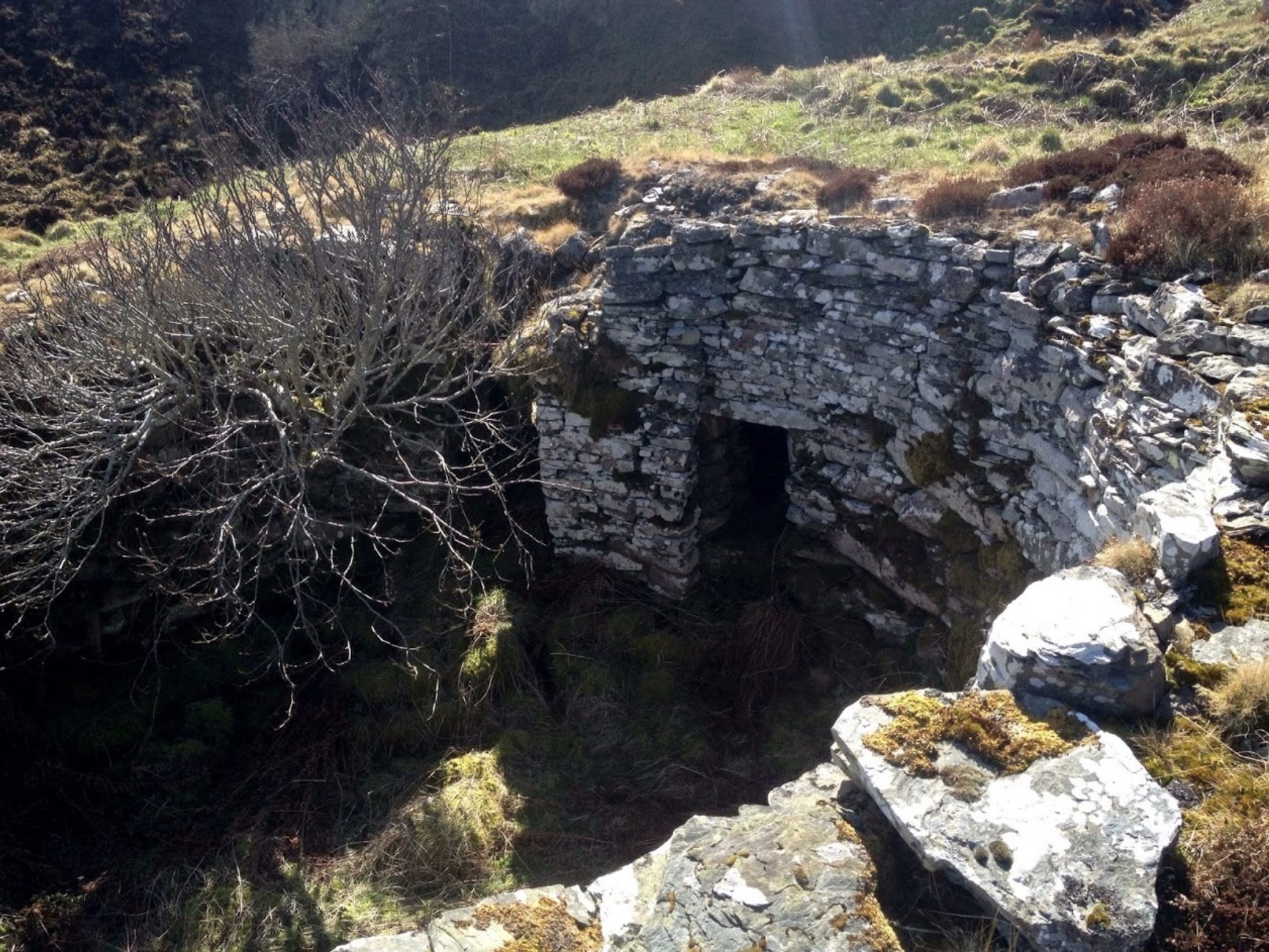
The Broch in 2013
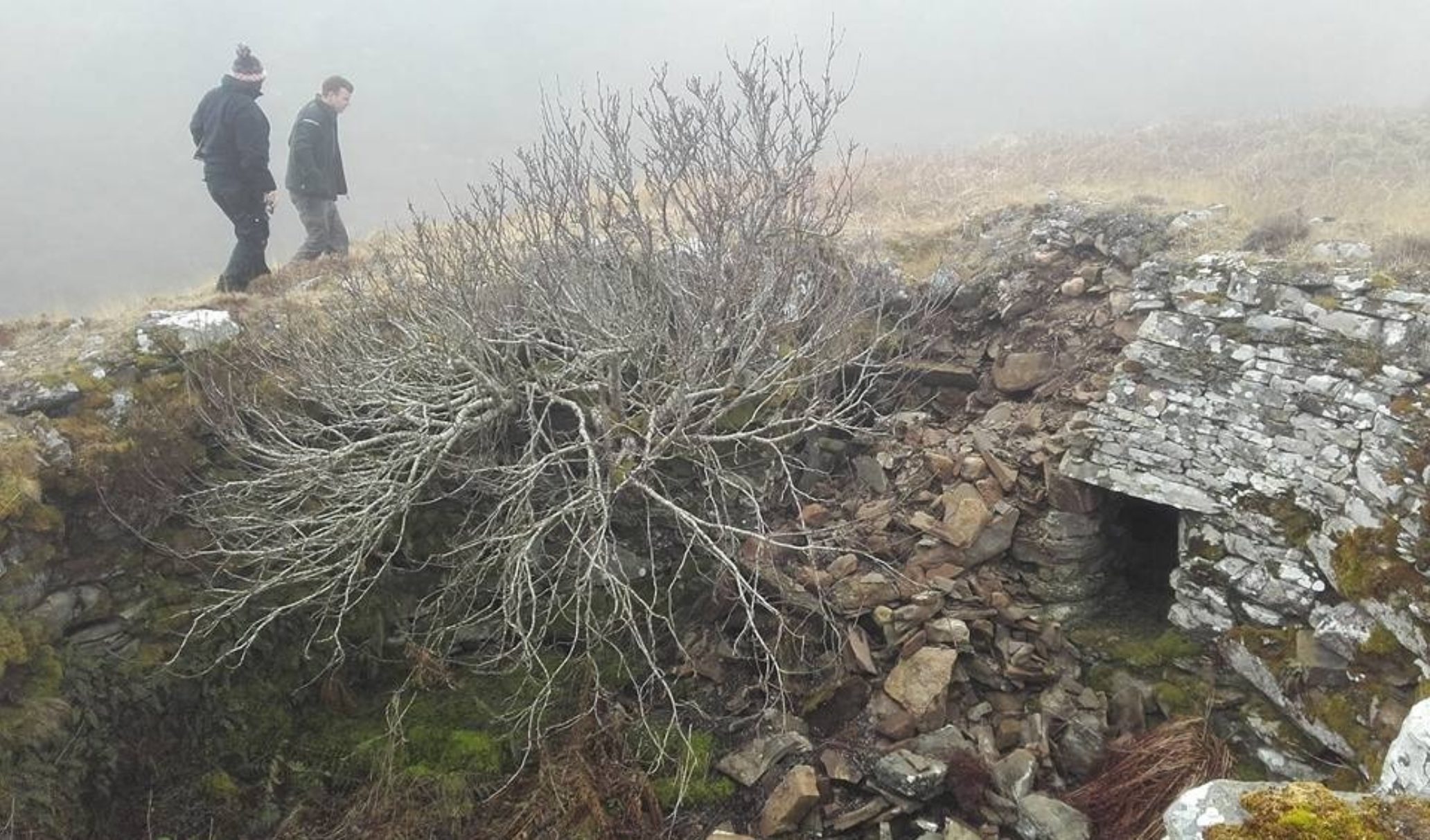
In 2015
As you can see, the buttress, which had formerly stood to the left of the cell entrance, and had only been built in 1891 during the broch's exacavation by James Mackay had collapsed, and obscured the main entrance to the broch. The tree too no doubt had a detrimental affect on the rest of the broch structure. Parts of the wall of beside the stairwell entrance (out of shot) had also begun to 'belly' inwards dangerously:
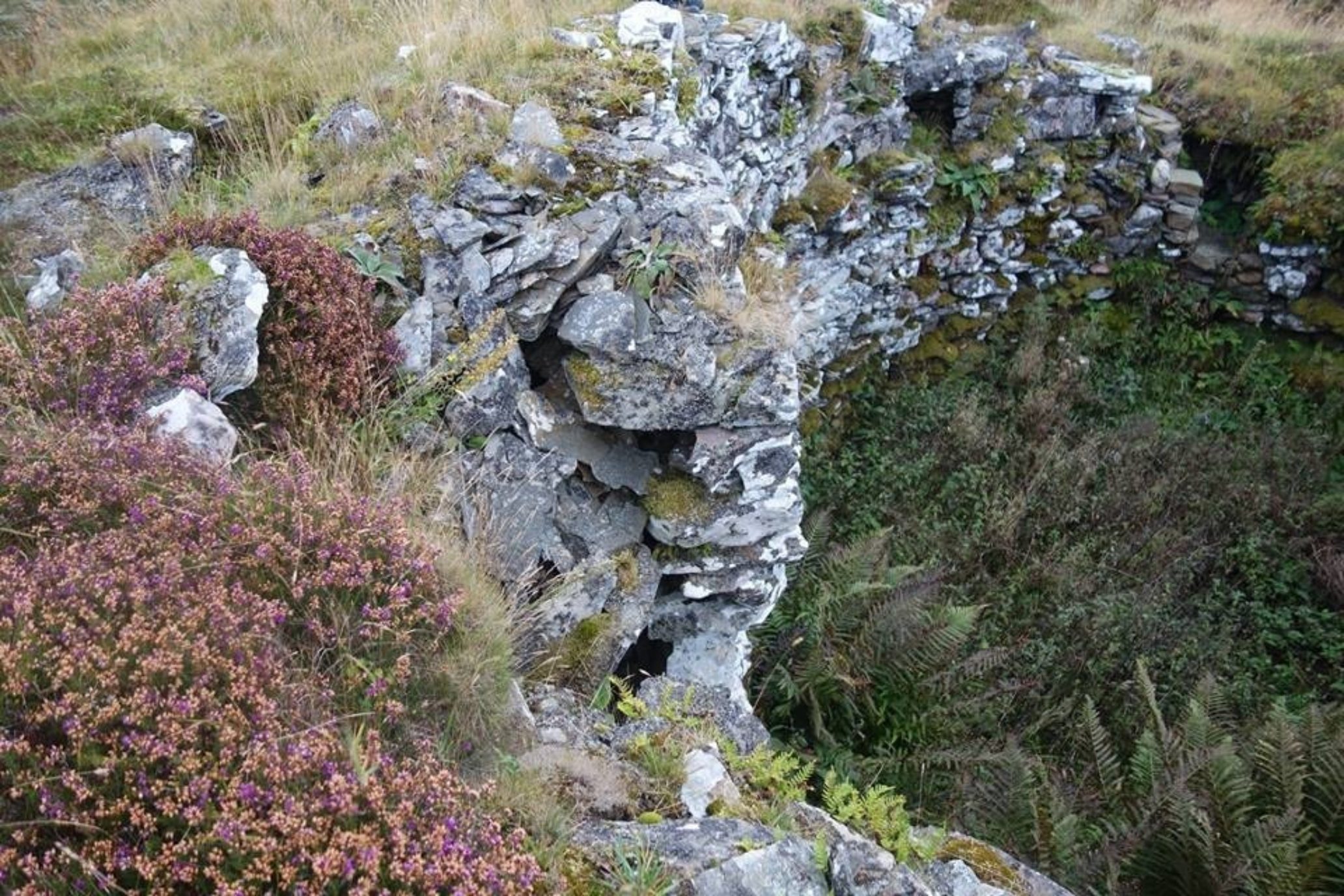
Archaeology, Conservation and Funding Applications, oh my!
In 2016 we invited Historic Environment Scotland (HES) to visit the broch to discuss what could be done. Despite the poor state of repair, HES believed the broch could be consolidated.
We applied for two briefs to be carried outfunded by HES: a 'structural inspection report' carried out by Andrew Mennie of Fairhurst Engineers, followed by a more thorough report into the means of repairing the broch, alongside costings, by Krystyna Pytasz of Addison Conservation and Design.
With this, we were able to apply to funds to save Ousdale Burn Broch. With this in mind we would like to thank SSE's Beatrice Caithness Community Fund, Historic Environment Scotland's Historic Environment Repair Grant scheme and the Highland LEADER Programme who have made this work possible. We would also like to thank the co-operation and assistance from Welbeck Estates.

In 2017 we began approaching funders to carry out the conservation work at Ousdale Broch - as well as the installation of interpretive panels, the creation of a small car park as well as the creation of a walkable trail down to the broch.
Archaeological and environmental works were carried out earlier in 2019 - the project was slightly complicated by the broch's location within a SSSI site. And then further complicated by the laptop the ecological surveyor had been using being knocked out of action by a lightning strike! Positively shocked by that we were....(sorry)
The archaeological work was carried by Clyde Archaeology, who were able to record the broch before any work was carried out, and whilst the stonework was consolidated. Below we can see just one of a number of lovely images they produced of the broch as part of the recording:
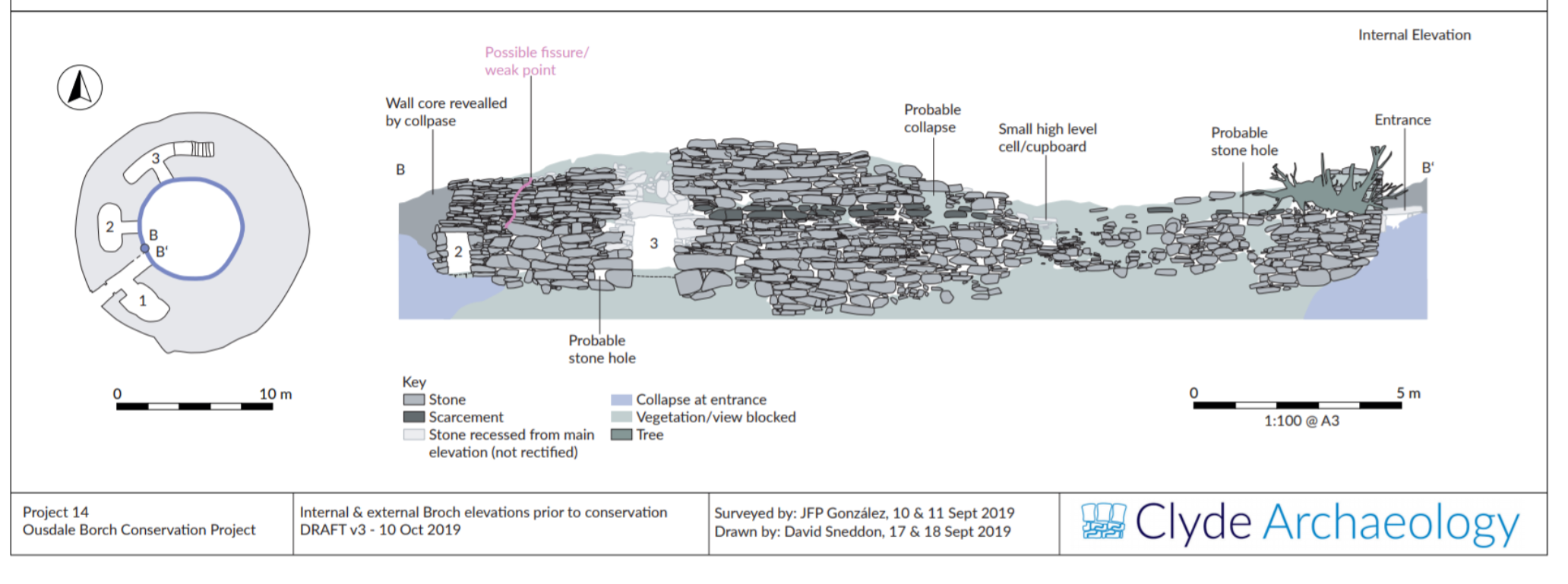
Clyde were also on hand as G Brown Stonemasons carried out their consolidation of the stonework. Most notably they discovered a second drain in the broch which hadn't been recorded, found running just below the entrance to the cell to the right of the entrance.
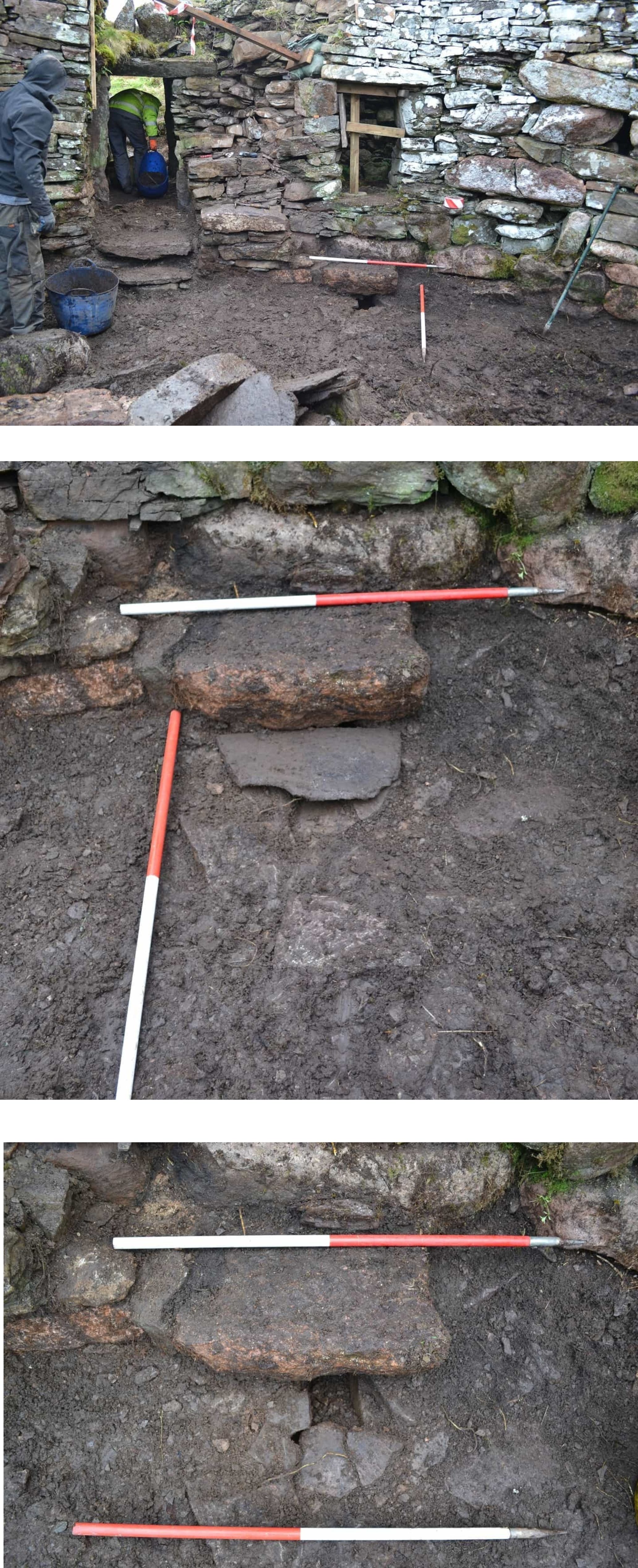
Consolidation Works
But let's get into the real meat of the consolidation works - first up was the removal of the rowan tree. Apparently it's bad luck to cut down a rowan tree - in the past, superstitious residents planted rowan trees outside houses and in churchyards to ward off witches, and two pieces of rowan tied together with a red thread can apparently keep you safe from witches.
No qualms from the stonemasons, however, who were quite happy to chip away at the tree. However, the tree had grown for song long within the broch that it was impossible to remove it entirely, and, as such, has been left in place, as an interesting quirk of the broch!
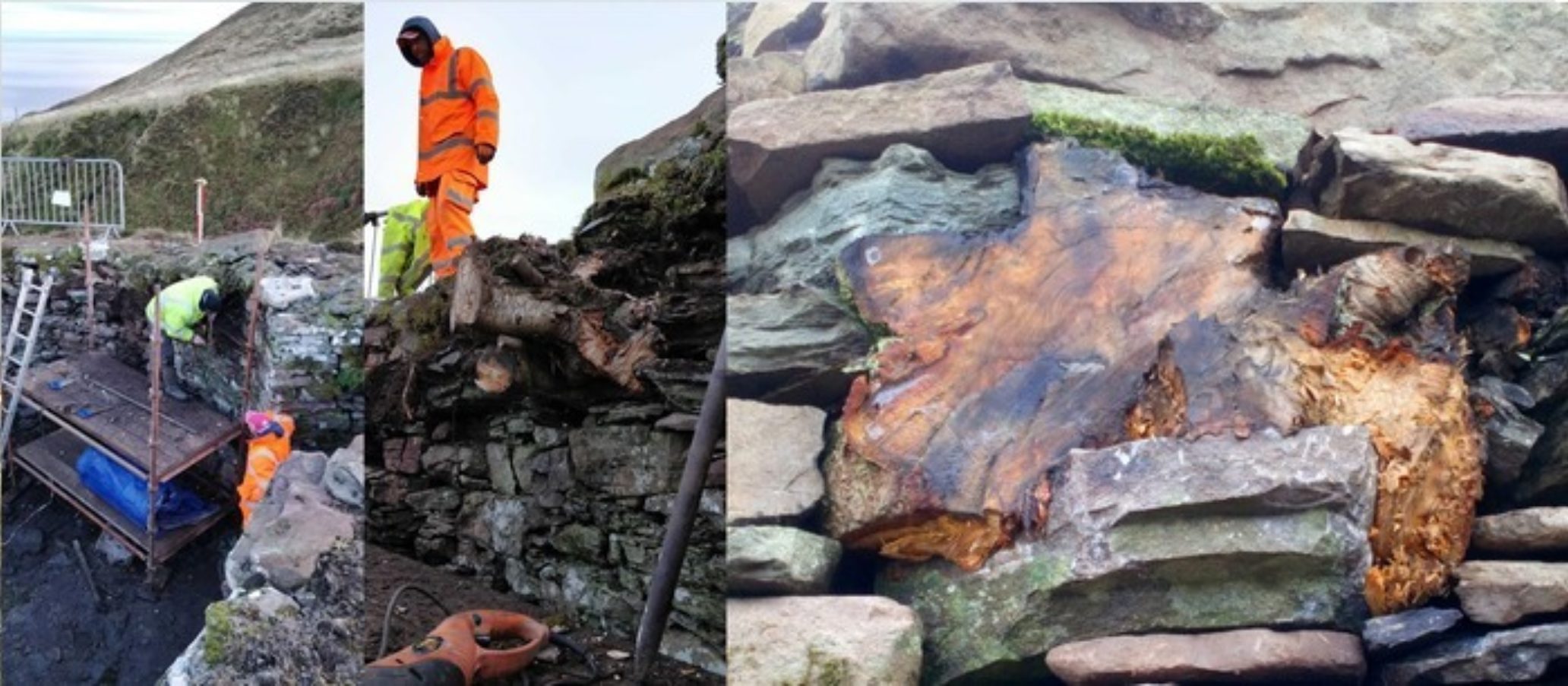
The tree chipped down to a stump, and left in place.
After the removal of the tree came the removal of that huge deluge of stone which had scattered across the entrance of the broch.It's quite satisfying to see it all tidied away! Here are a few photos which should detail how the broch has been transformed over the last few months:
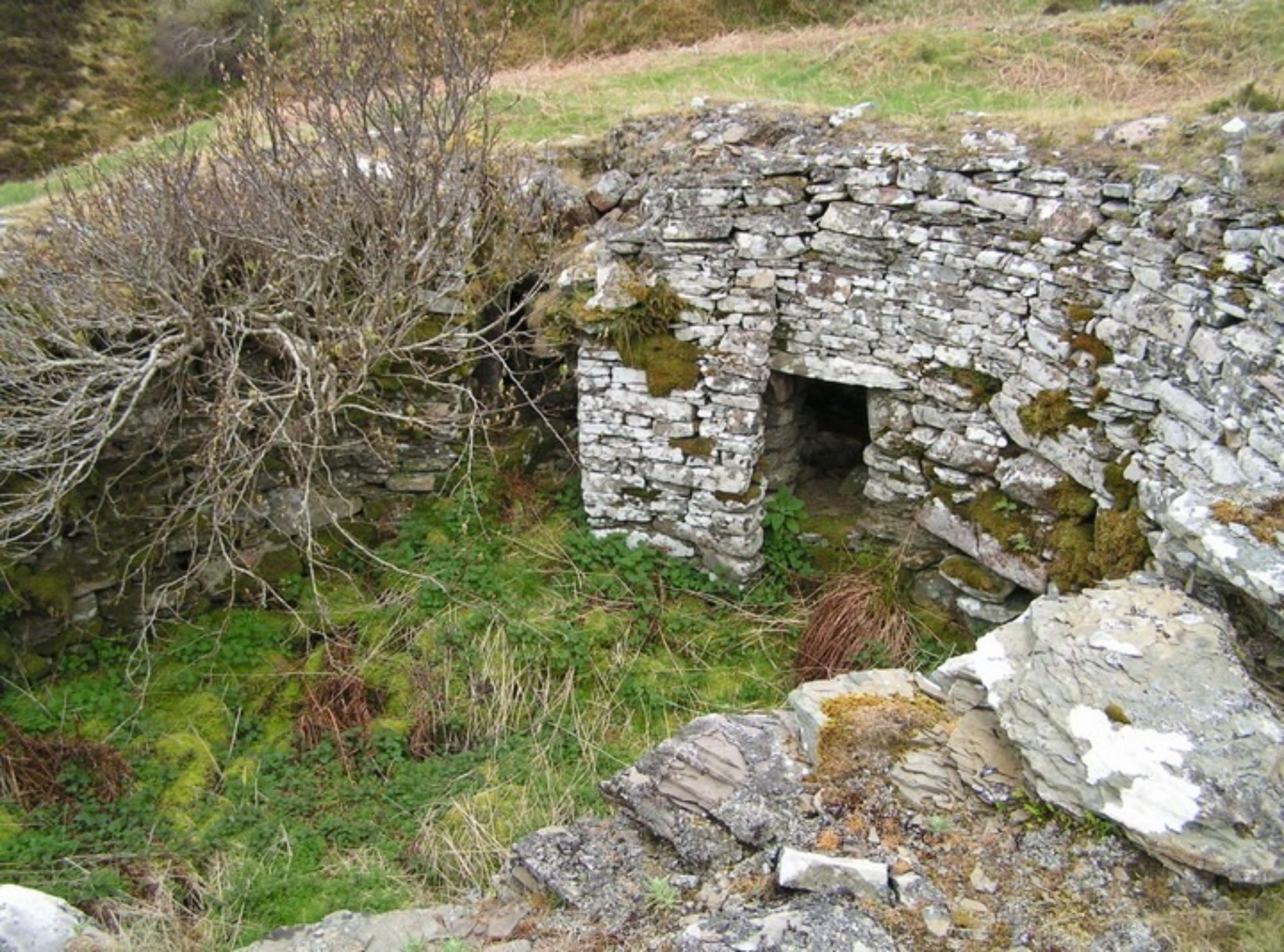
Above photo taken in 2008 from The Modern Antiquarian
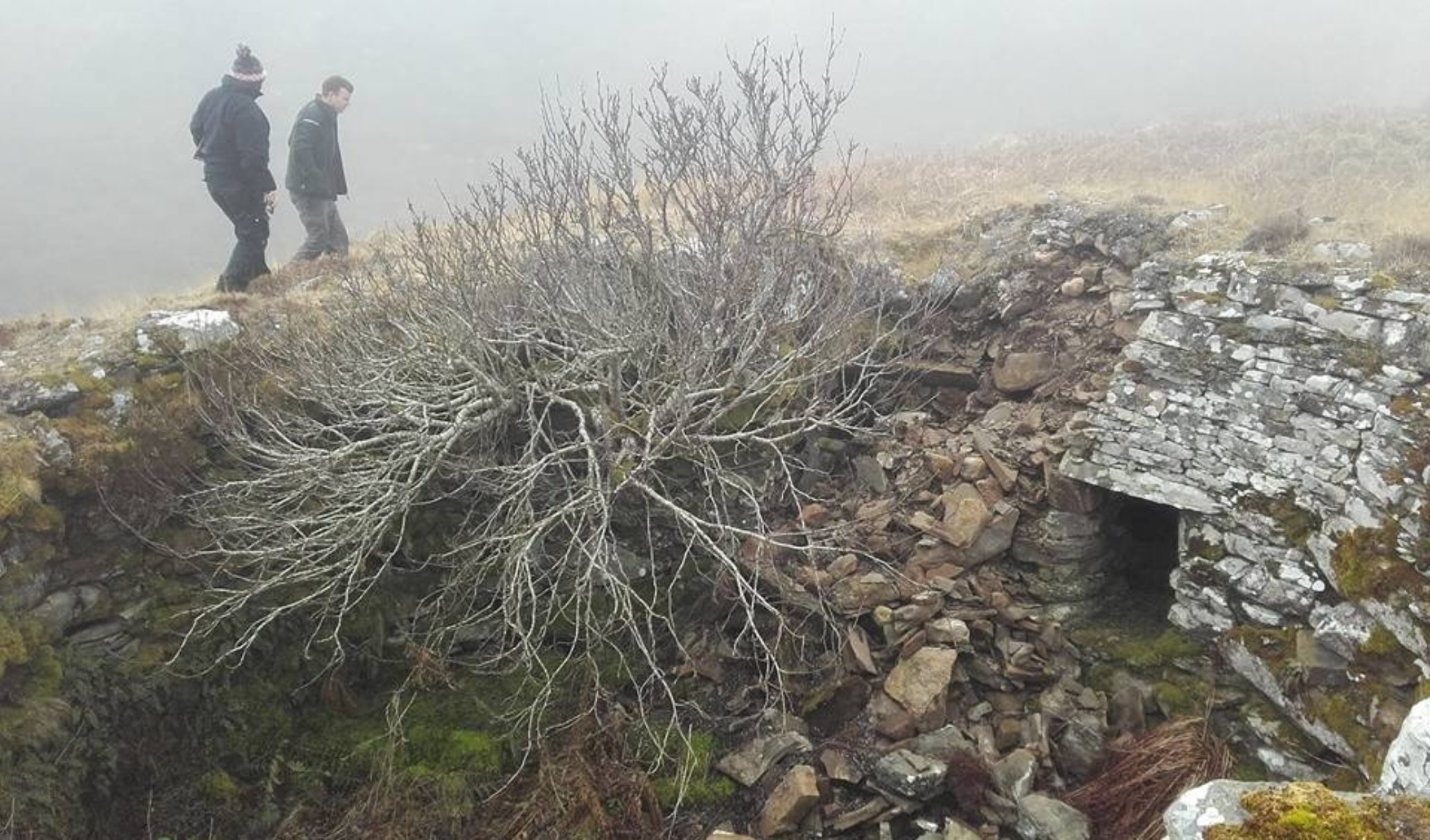
Ousdale Broch in 2015
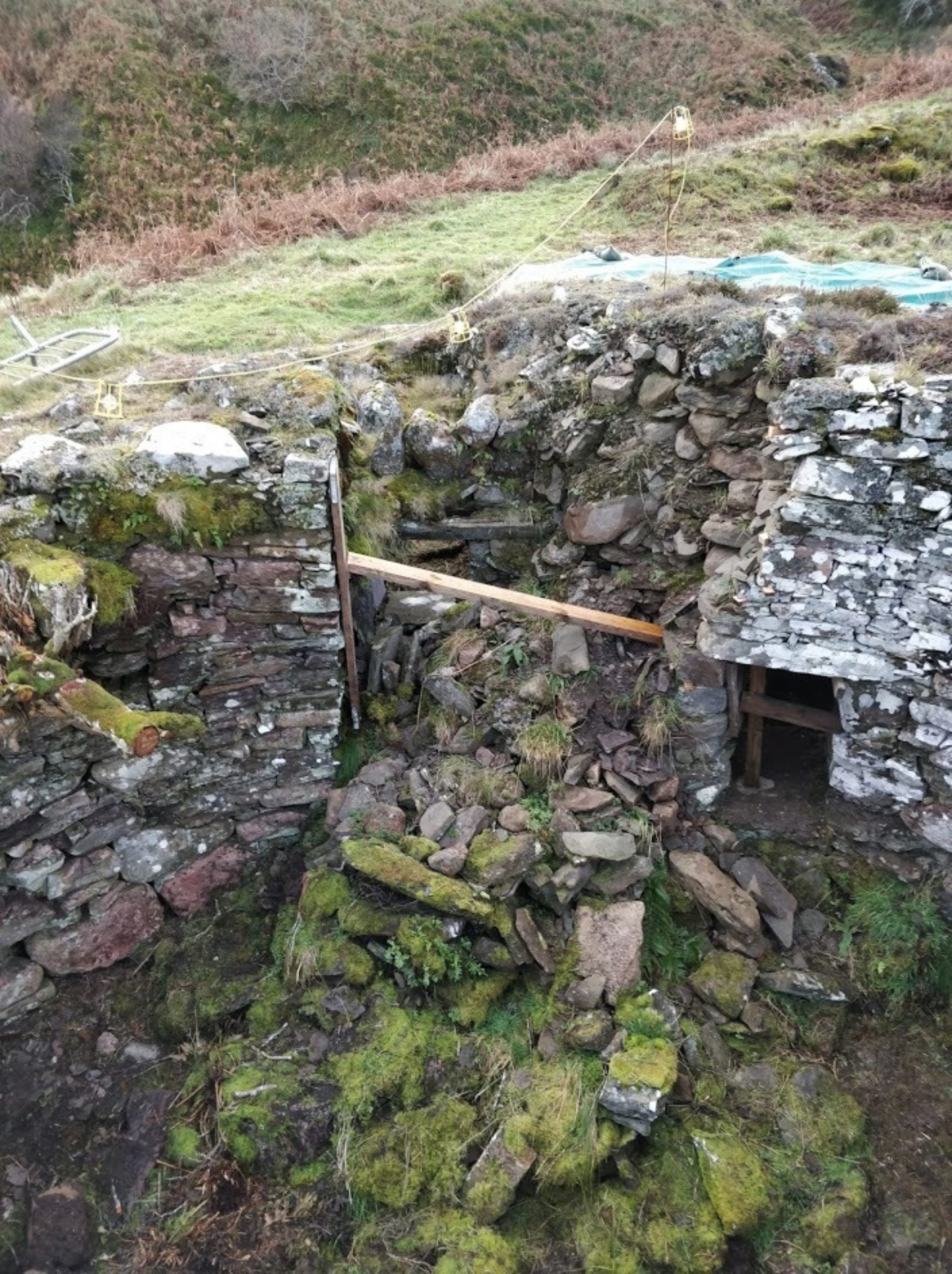
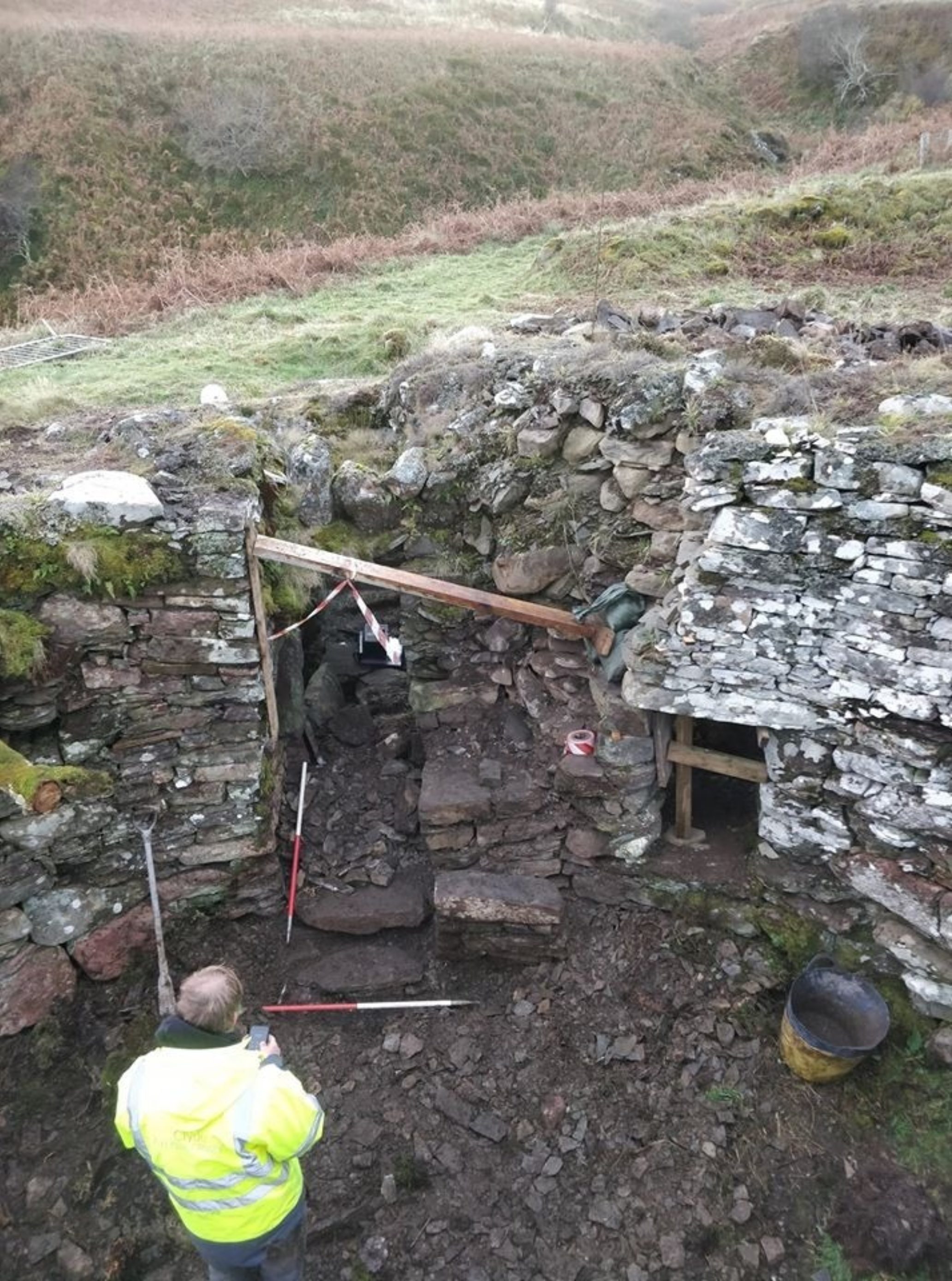
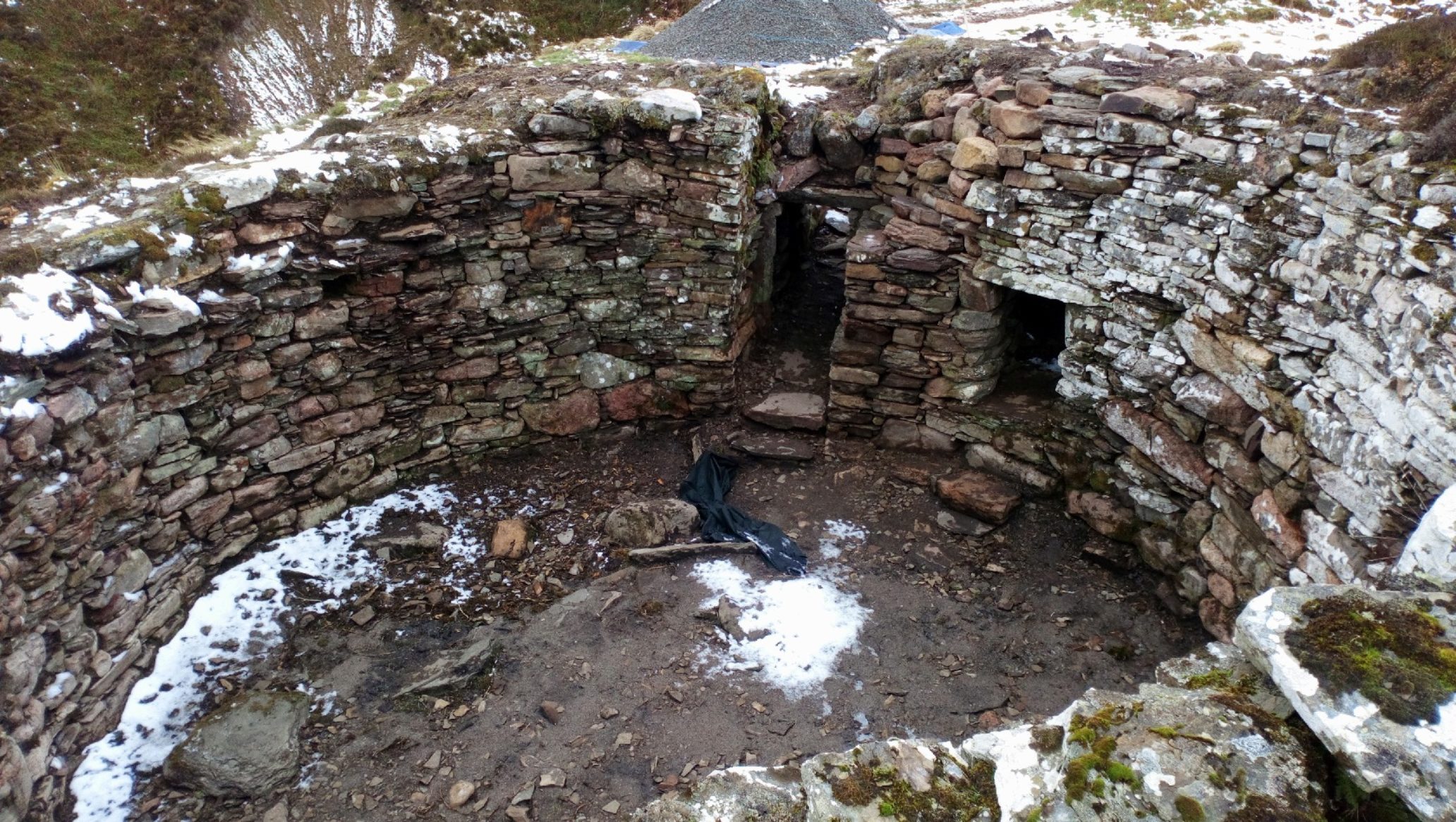
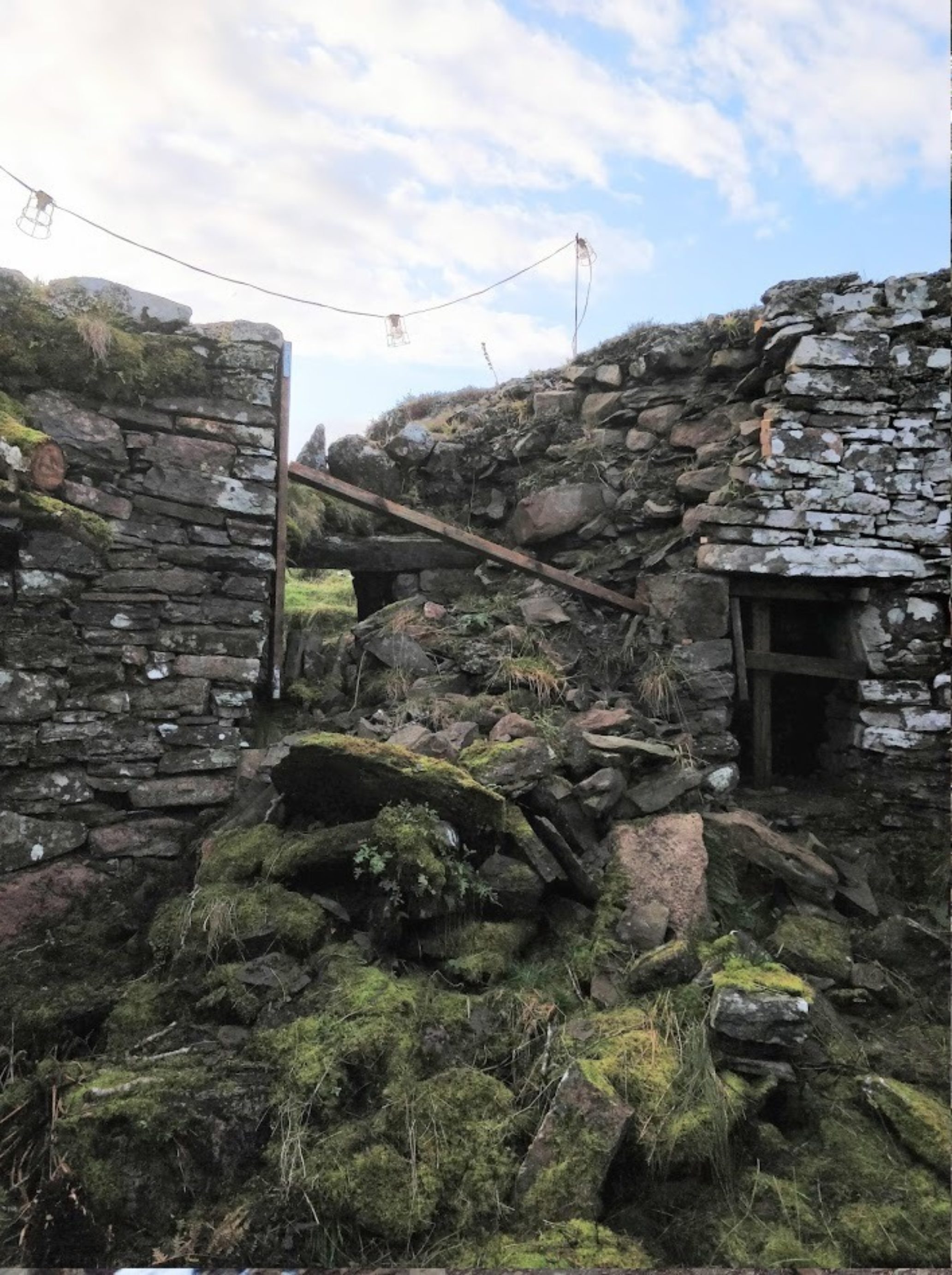
And from this...
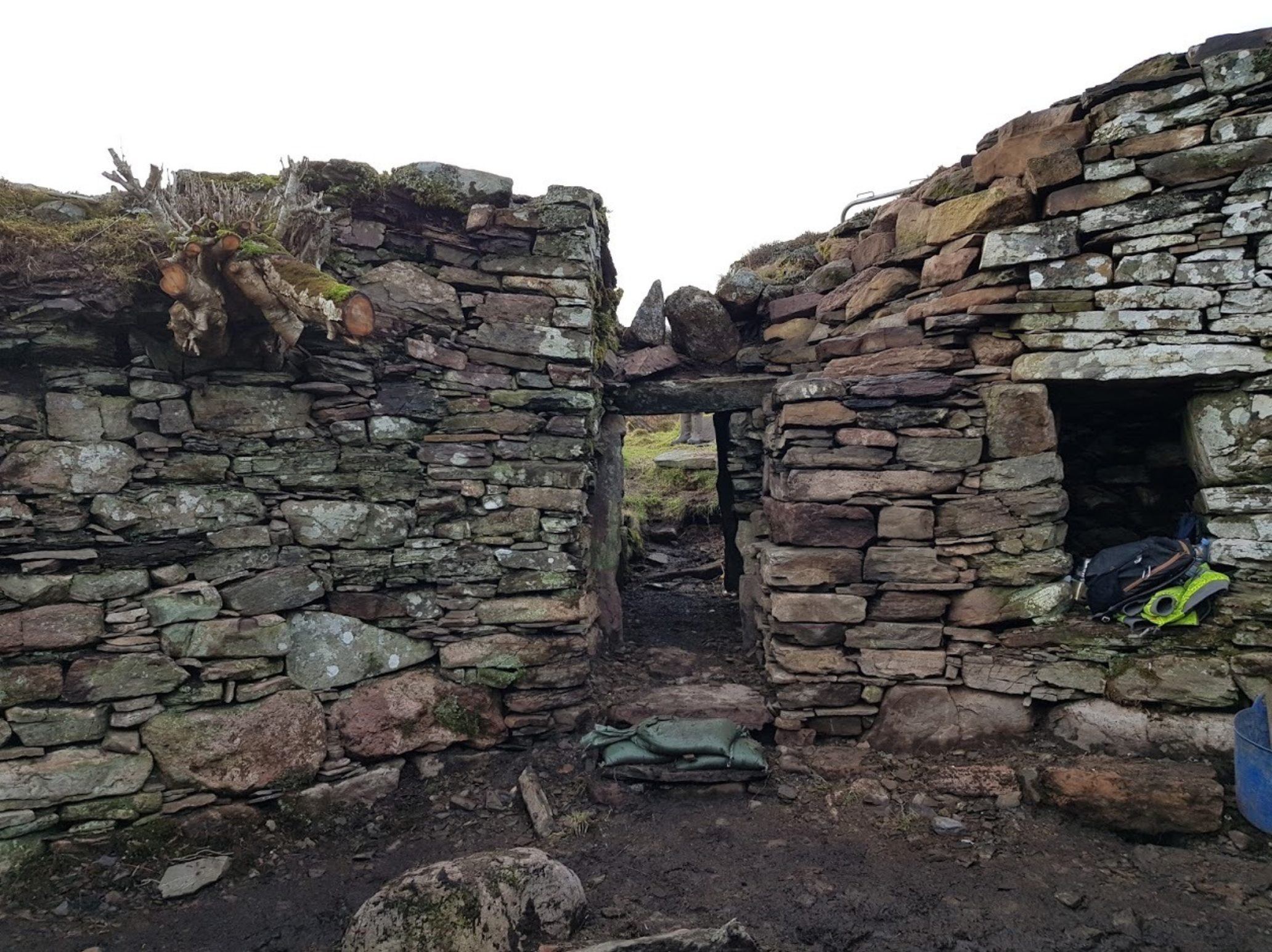
to this!
Looking good, wouldn't you say? There is of course a fair whack of work to be done yet, although we hope that work will resume in the summer, to finish everything off. But lets look at some of the other aspects of the conservation...
A 2,000 year-old TV stand
Think about your living room, or bedroom. What do you show off? Is it a 60-inch telly? Is it that Benedict Cumberbatch poster? Is it artwork? Is it a lava lamp? Stuff and things fill our homes and lives, and has done for a hundreds, and thousands, of years.
This leads archaeologists to question the cultural value of certain objects, and ask even more important questions like 'Why IS Benedict Cumberbatch a sex symbol' and 'Who the hell still has a lava lamp?'
On that note - an 'aumbry', or a small recess, has been rebuilt at Ousdale by the stonemasons at Ousdale. It had collapsed some time ago, and, with permission from Historic Environment Scotland we've had this feature included at Ousdale Burn Broch (see below for 'before' and 'after' shots.)
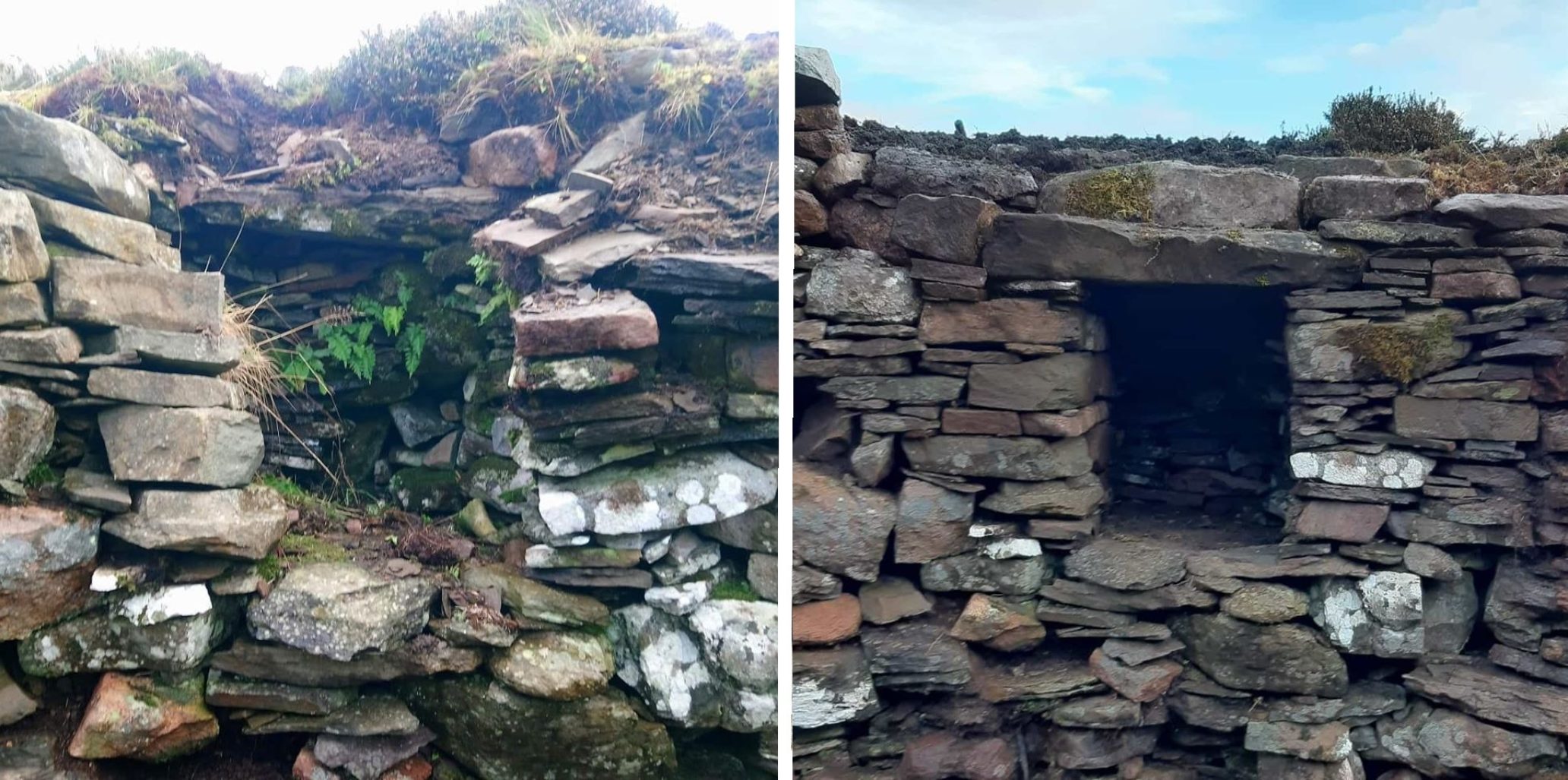
This aumbry may have held treasured possessions; perhaps the families who once lived here displayed things very dear to them, or objects which could impress visitors...like that stupid massive telly you have.
What do you think might have once been found in this prehistoric cupboard?
Hells Bells, let's talk about Cells!
There are two cell structures at Ousdale. Well, actually, there's three, but we only required work on one.
The cells we are interested in are shown below - one to the right of the entrance (1), and one to the left (2).
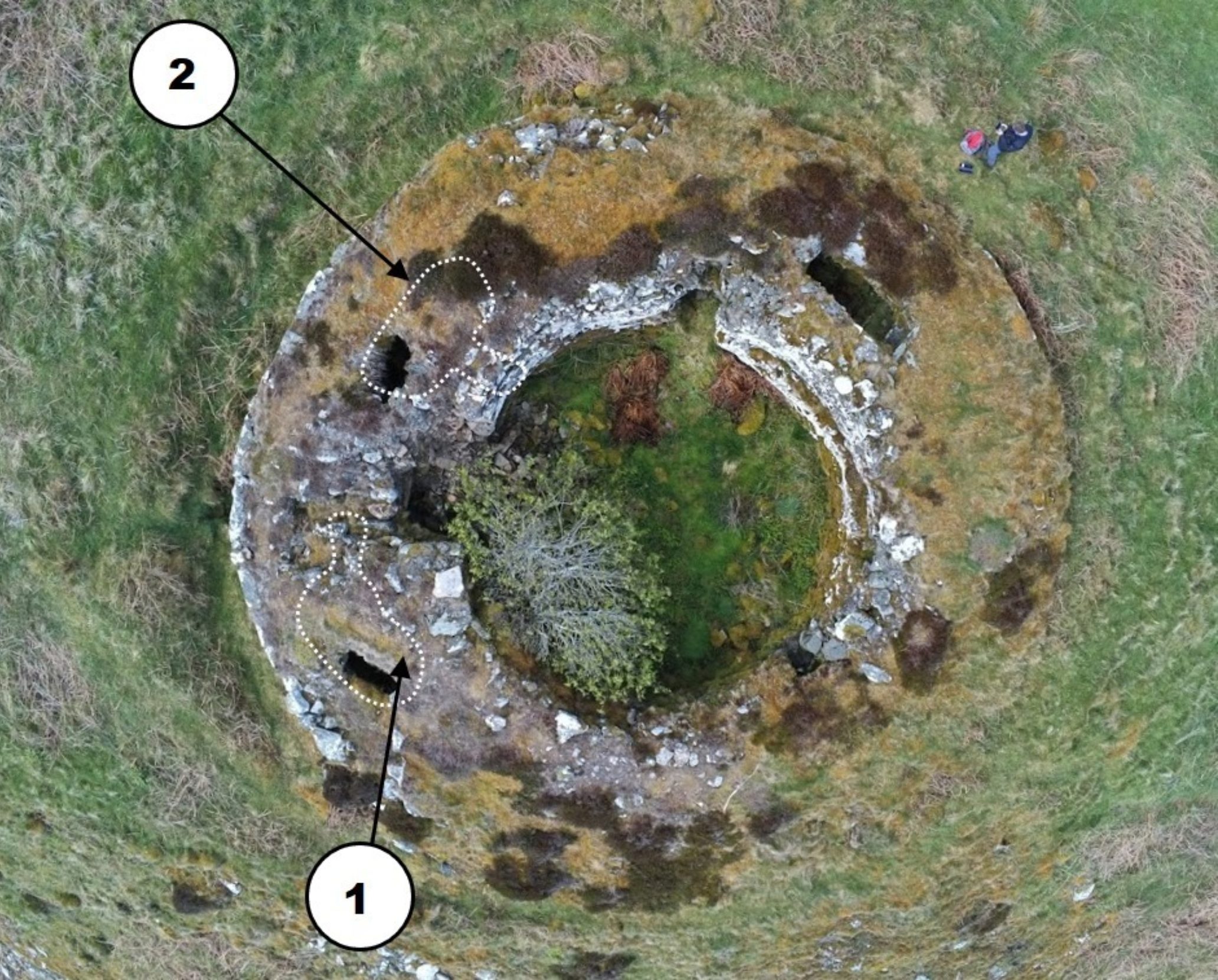
Cell (1) is the guard cell, which, appropriately enough, can be found on your left as you crouch through the entrance gallery.
According to James Mackay, this cell was...
"8 feet 6 inches in length, 5 feet in width, and nearly 8 feet in height. It is arched over on a system of overlapping the stones until they nearly meet at the top, when it is closed in by one slab."
This overlapping of stones is a technique known as corbelling, and can be found in many prehistoric structures - great examples can be seen at the cell at Dunbeath Broch, or Maes Howe in Orkney, for instance.
(Check out the fabulous conservation work carried out by Dunbeath and Berriedale Coummunity Council at Dunbeath Broch by the way)
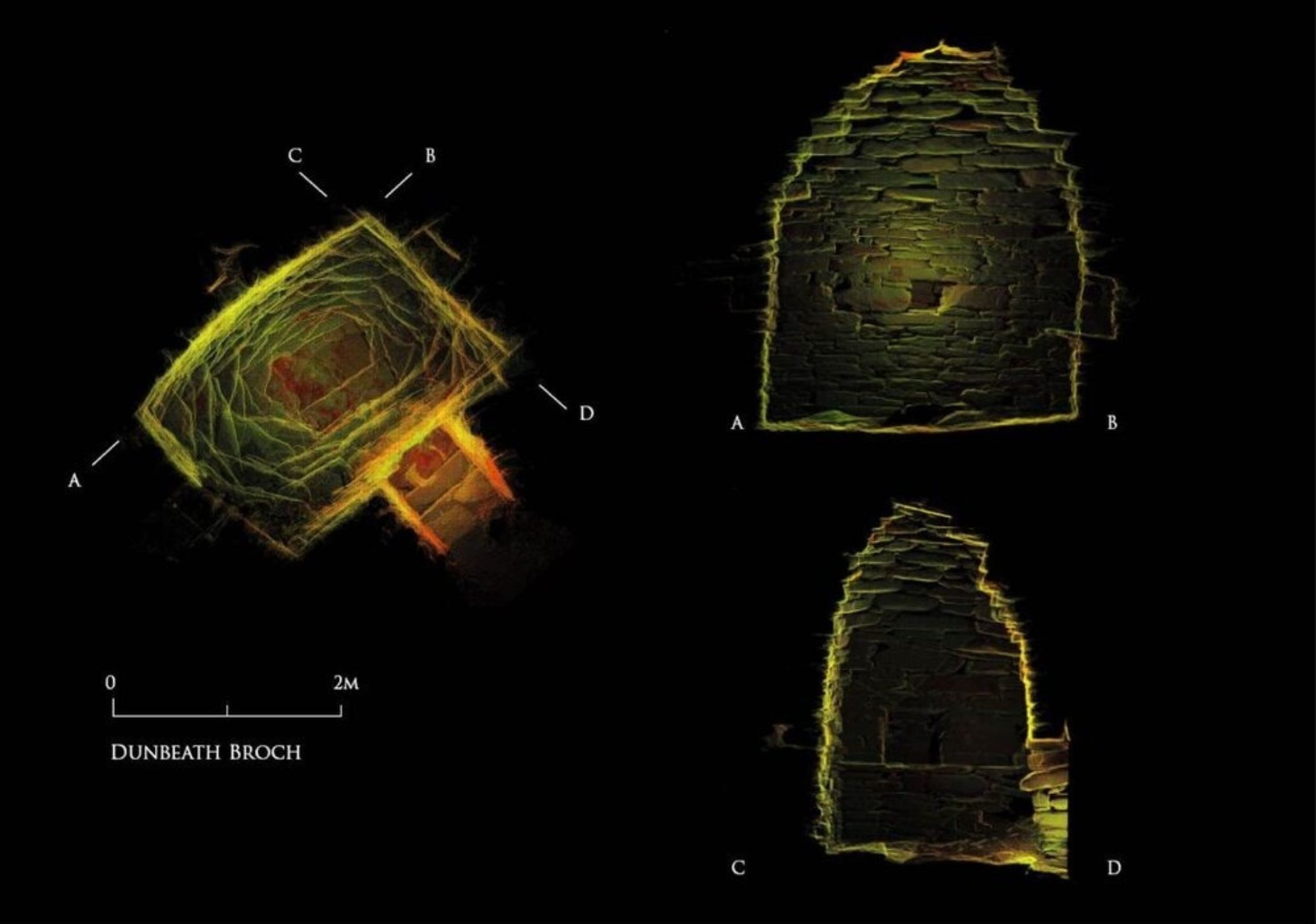
Some shots of the cell at Dunbeath, demonstrating the corbelling technique. The image on the left is looking 'up', whilst the images on the right show the broch in section. Image from AOC Archaeology Group
Sadly, the corbelling had failed or collapsed at some point - and this is where CBP stepped in.
Now, our intention is not to rebuild the guard cell, nor are we going to rebuild the broch. This is a conservation project - we are conserving it as it is - think of it as damage prevention!
After discussion with Historic Environment Scotland, the stonemasons were directed to rebuild the corbelling over this guard cell. The idea here, however, is to delineate what is original, and what is new. So, whilst the new corbelling over the guard cell might not look 'pretty', it serves it's purpose - it re-roofs the guard cell, but in a way which clearly shows that this was a modern job, and not prehistoric.
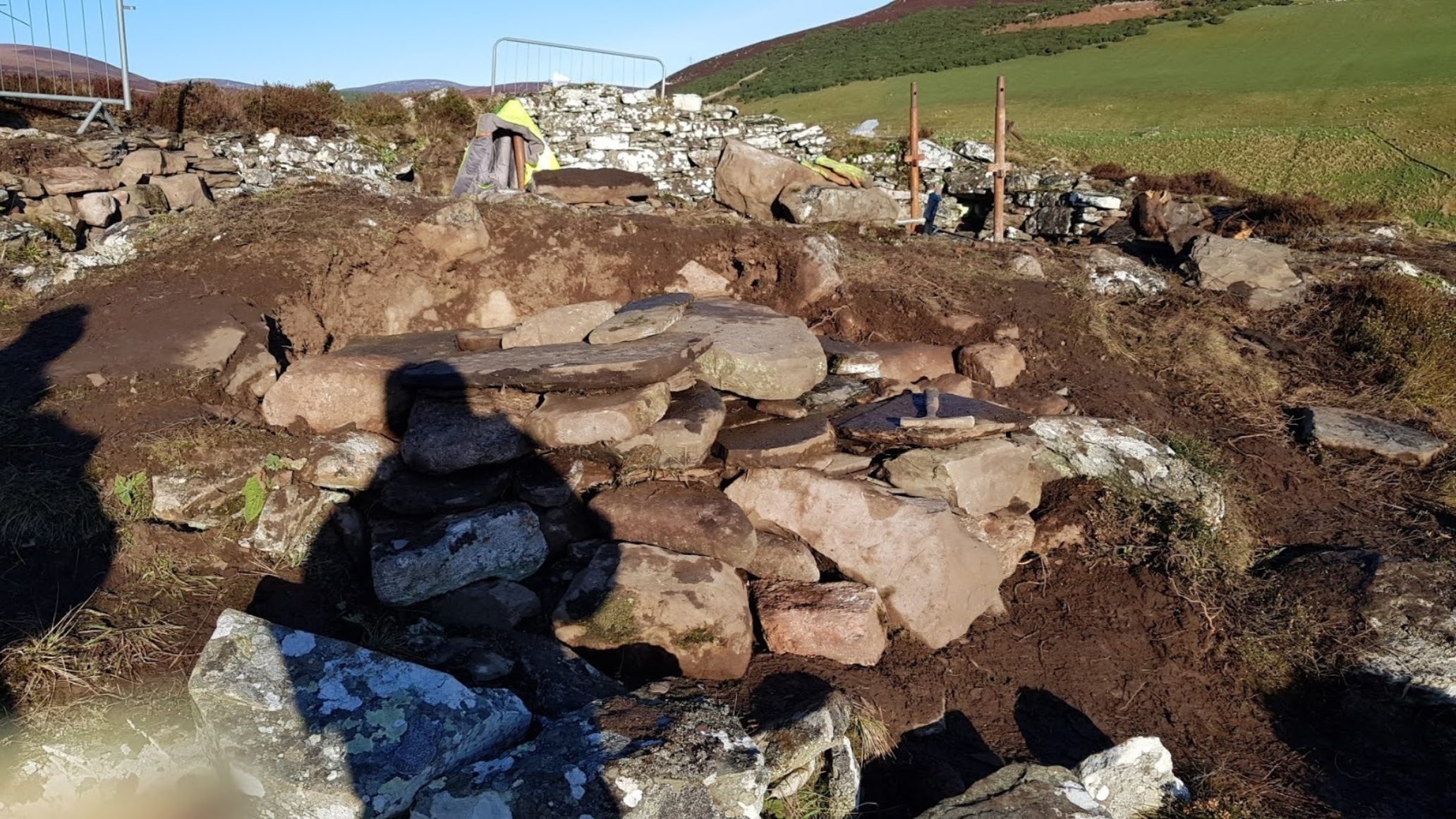
The corbelling above the guard cell. It's meant to look 'bad' on purpose!
We're not quite done with the guard cell. Mackay continued:
"In this chamber was found a cist inside the doorway, 2 feet square, covered over with a flag, and containing ashes, charcoal, and a dark unctuous clay." We wonder wonder what sort of activity was carried out here? Any ideas? 🤔
Moving on to Cell (2). This cell is open, with a larger opening at the top than cell one - here, however, it was not felt that there was enough stone to create a successful corbelled roof, and, instead it has been proposed to leave the cell roof open, possibly barred to prevent any nasty accidents, and with the usual 'Don't bloody fall in here you dolt' signage.
Can't corbel them all, we suppose!
Stairway to Heaven
Aside from an intact entrance, cells and an aumbry, Ousdale Burn broch also boasts a lovely set of steps, which run from the ground floor to the wallhead. The idea that this broch may have had a second floor is supported by the fact that there is also the remains of a scarcement ledge (highlighted in the first image as a red dotted line), essentially a series of stones jutting inwards, which probably would have supported a floor perhaps made from timbers or a 'wattle and daub' type construction.
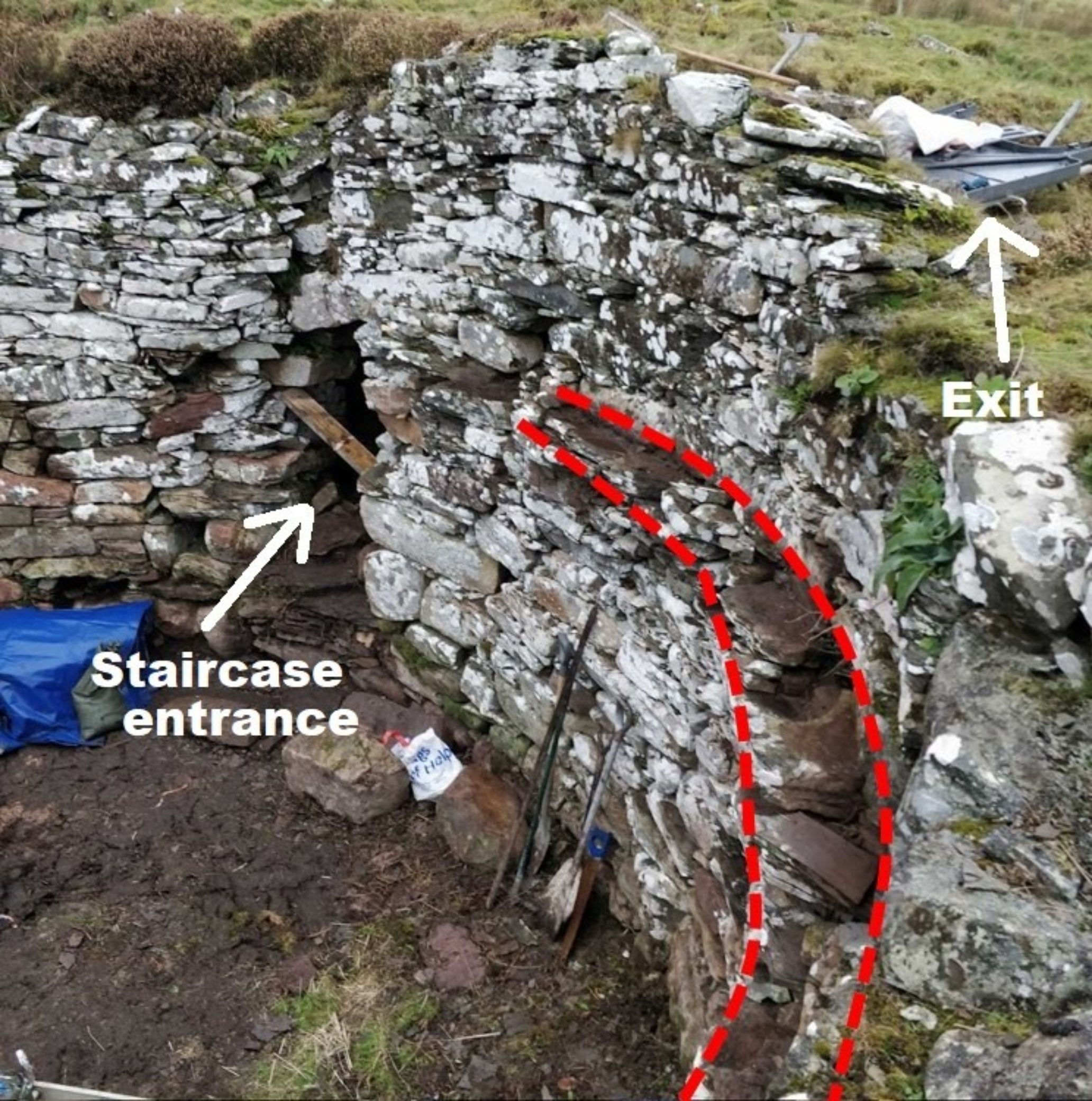
(By the way, if you want some fascinating insights into what the floors of brochs could have been like, then please please check out the Clachtoll Broch Project (that's the 'other' CBP...). It appears that this broch burnt down at some point during the Iron Age, but this unfortunate event helped to preserve fibrous materials in the broch such as a charred reed matt, picture below.
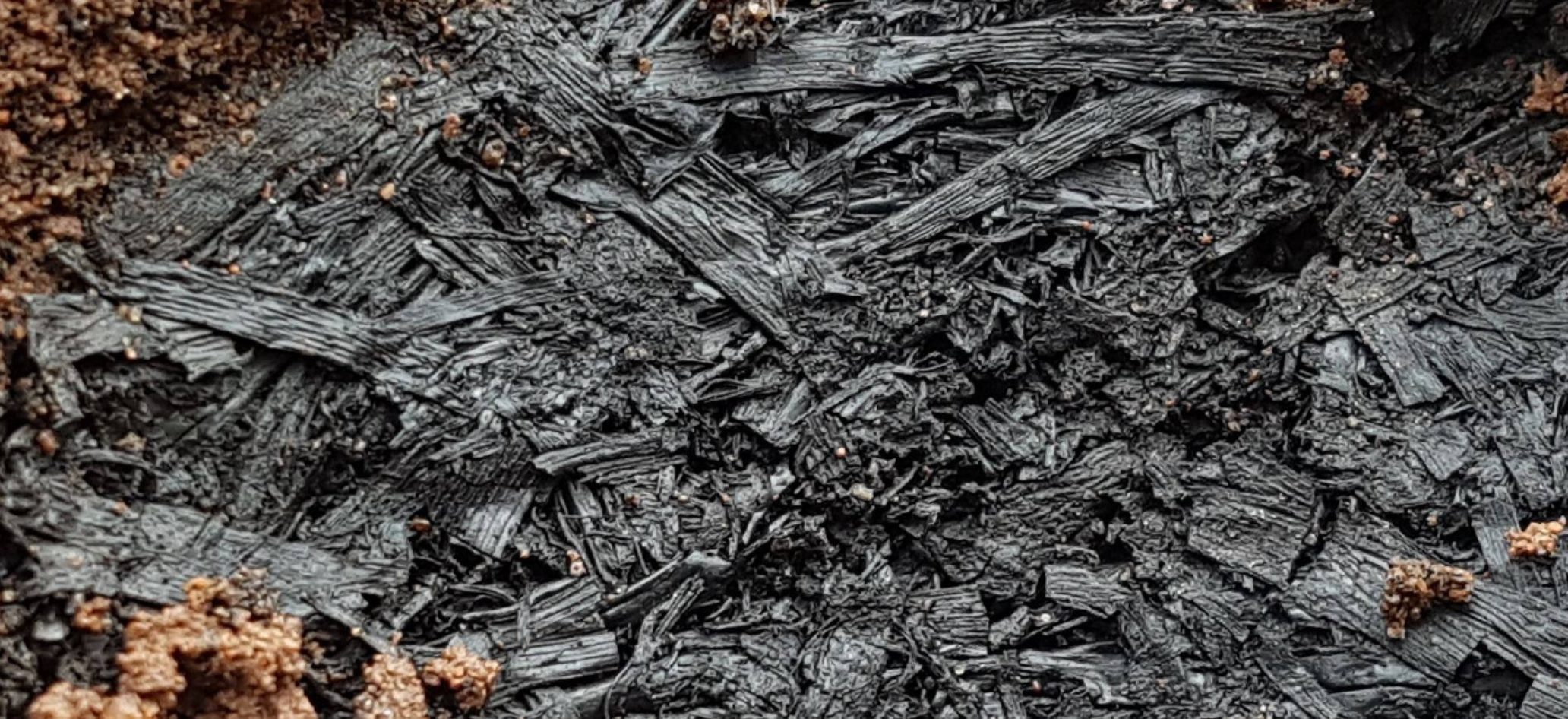
This type of construction was quite possibly the 'floor' of the broch. Historic Assynt and AOC, the groups behind the Clachtoll excavations, went that bit further with this idea, testing them out, standing on them (they worked by the way) and then, afterwards, setting fire to them, to see how they might appear in the archaeological record - now that's experimental archaeology!)
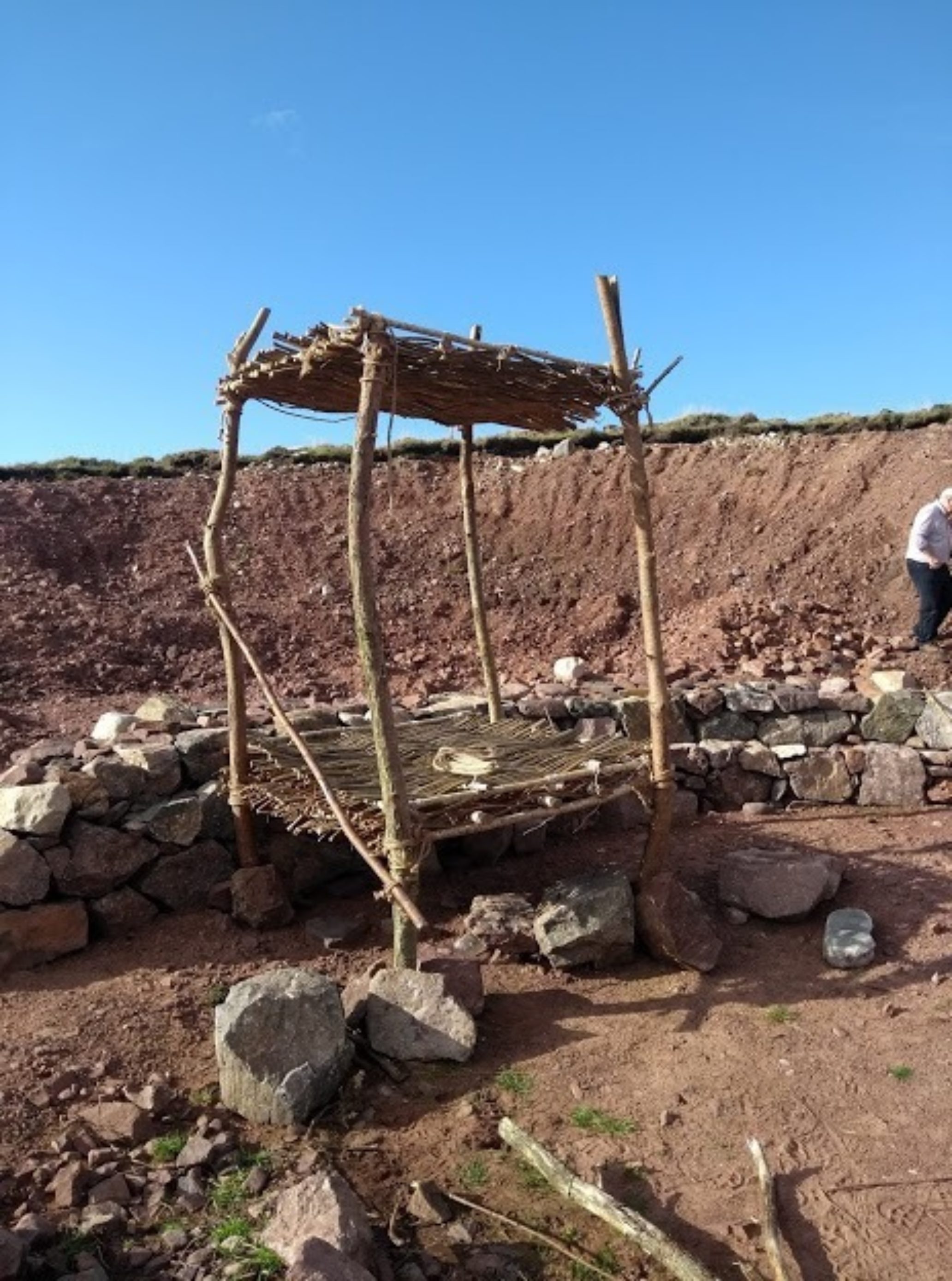
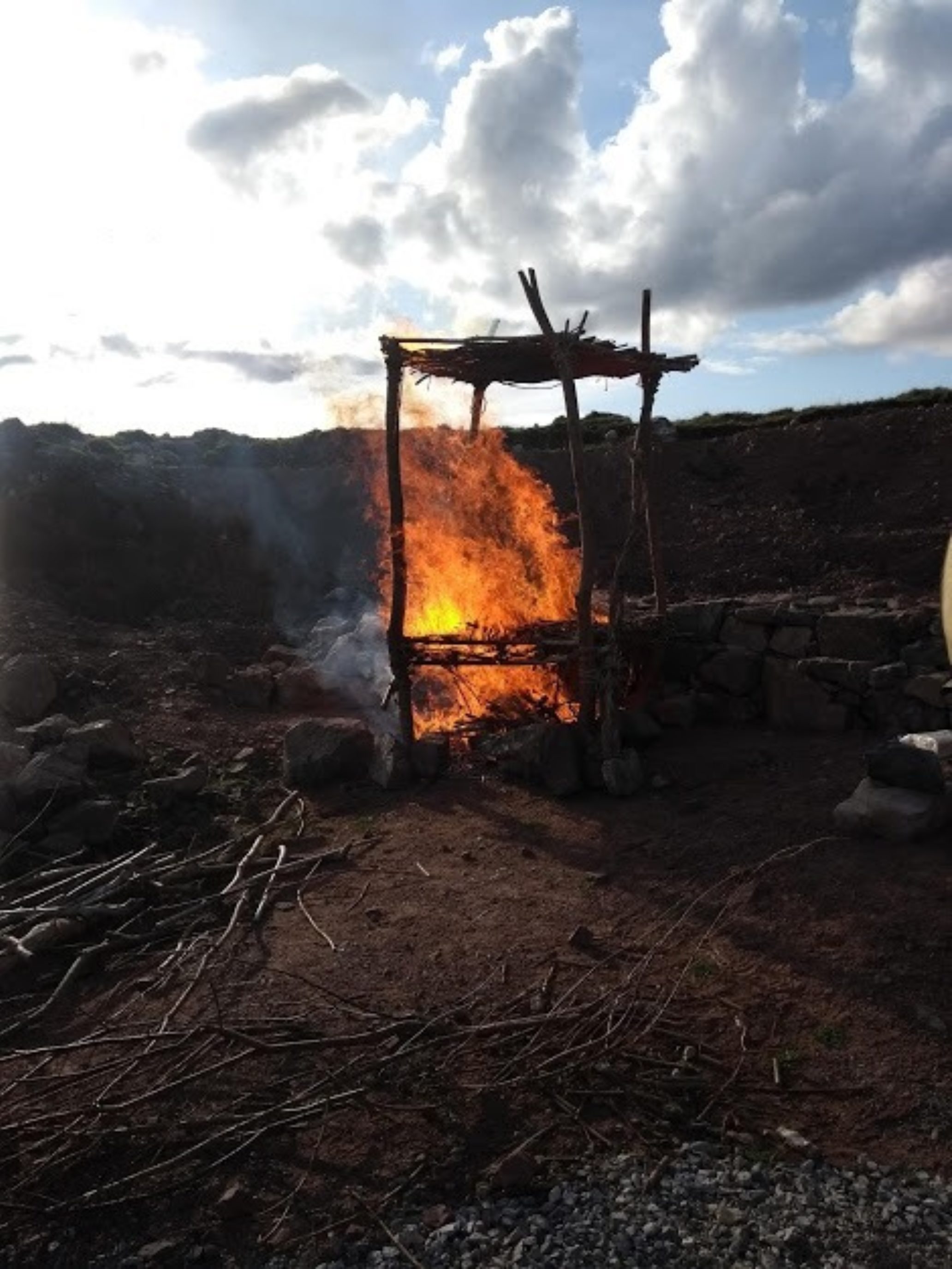
Anyway, back to OUR project...
The staircase, as you'll remember, was where the 'deviant burial' was found, so it has some significance. But in any (stair)case, such a well-preserved staircase is a rare thing to find among Caithness Brochs, and so we were keen to protect it.
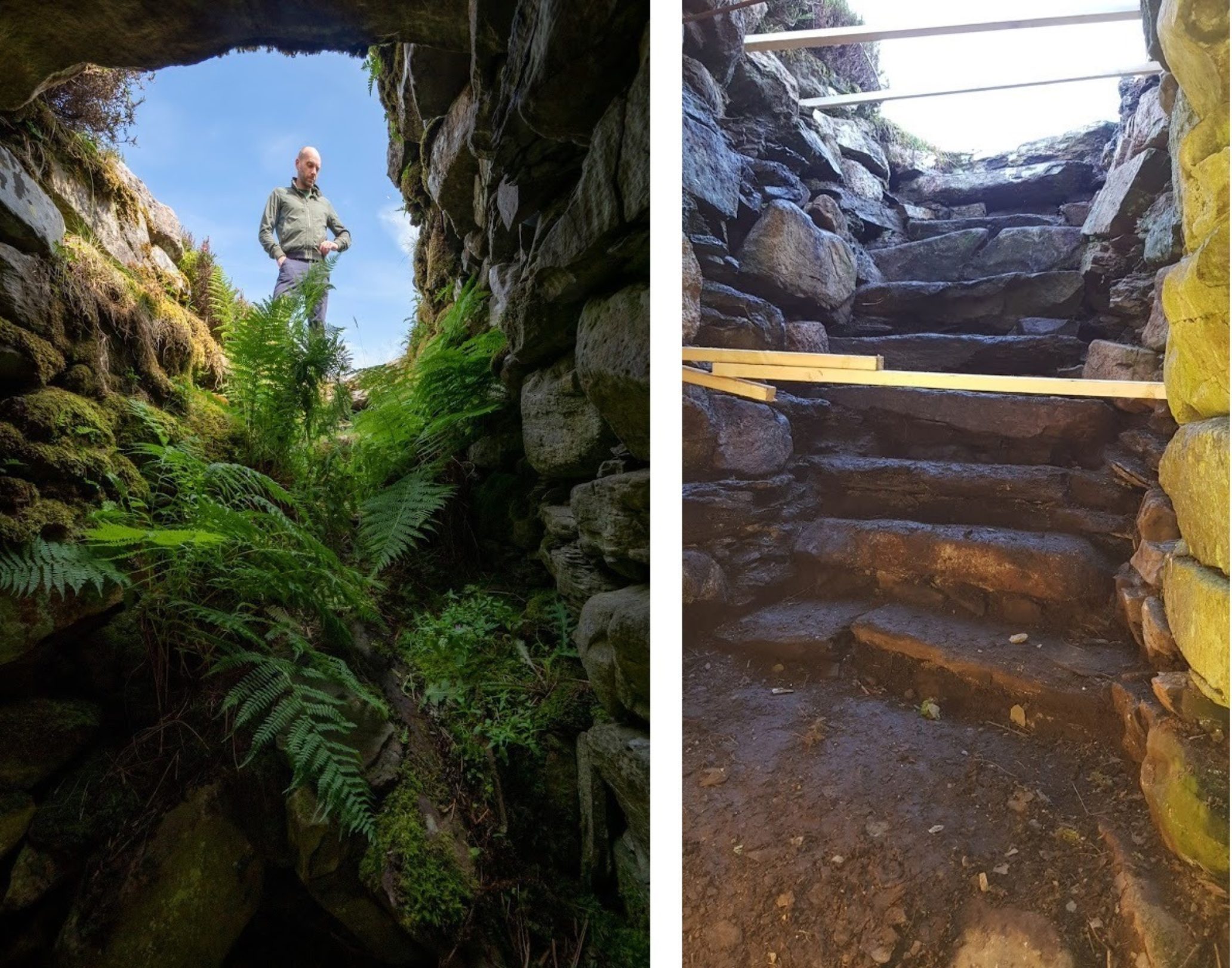
The view looking up the stairs, before (left) and after (right)
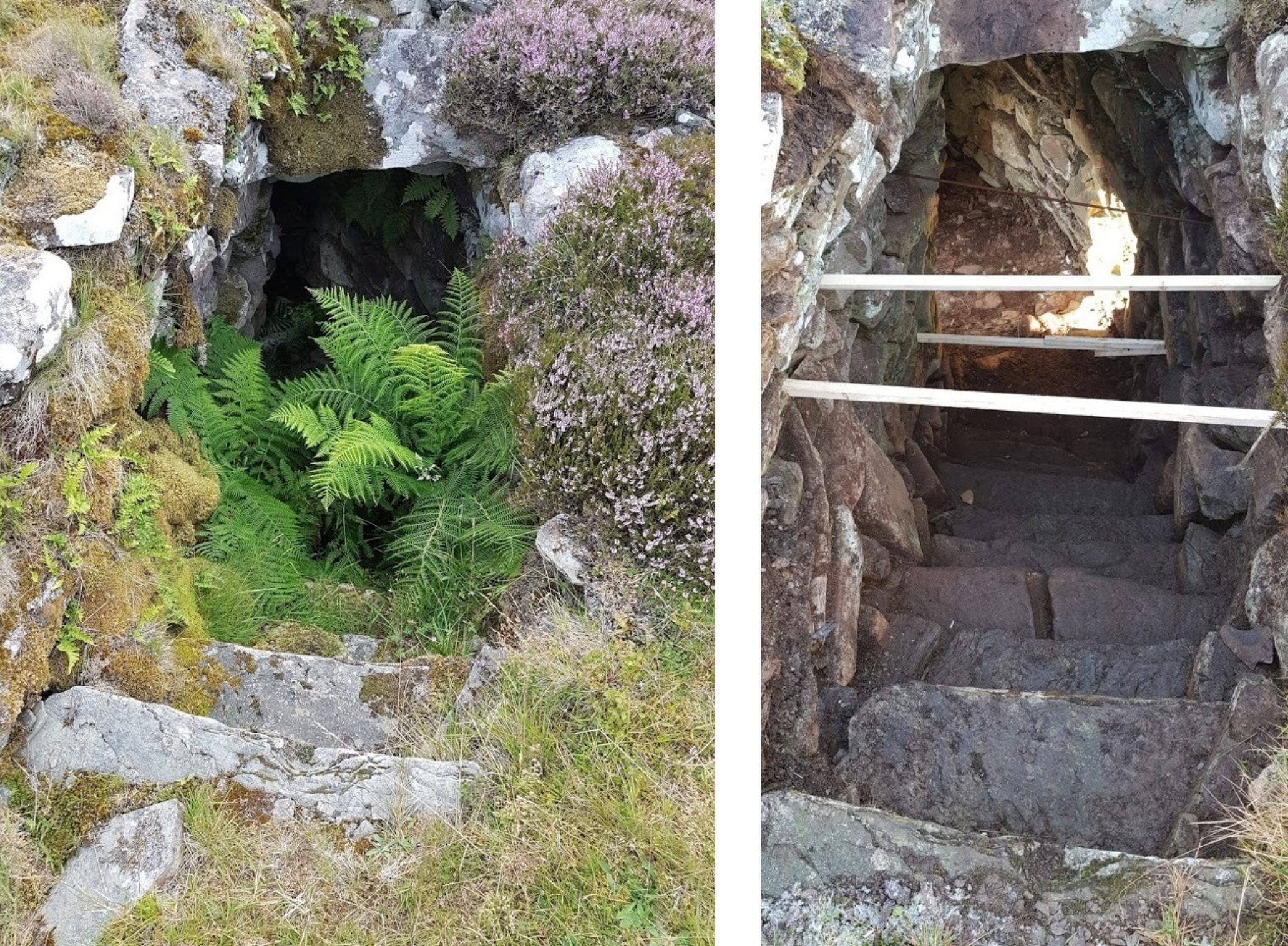
Looking down the stairs, before and after shots
The stairs have been cleaned and cleared of debris - lots of fern like plants here which definitely gave the place a very Indiana-Jones-Meets-Jurassic-Park feel to it (now there's the movie crossover we didn't know we wanted, but now we NEED).
We'll most likely have to 'bar' the entrance/exit to the broch as we want to discourage folk pottering about on top of the wallhead - at the moment, as you'll note, there is a wooden bar across the stairs, but we'll install a metal one at a later date.
As you can also see the wallhead beside the staircase was bellying out (or rather in, towards the broch interior) but this has now been conserved to stop any further damage.
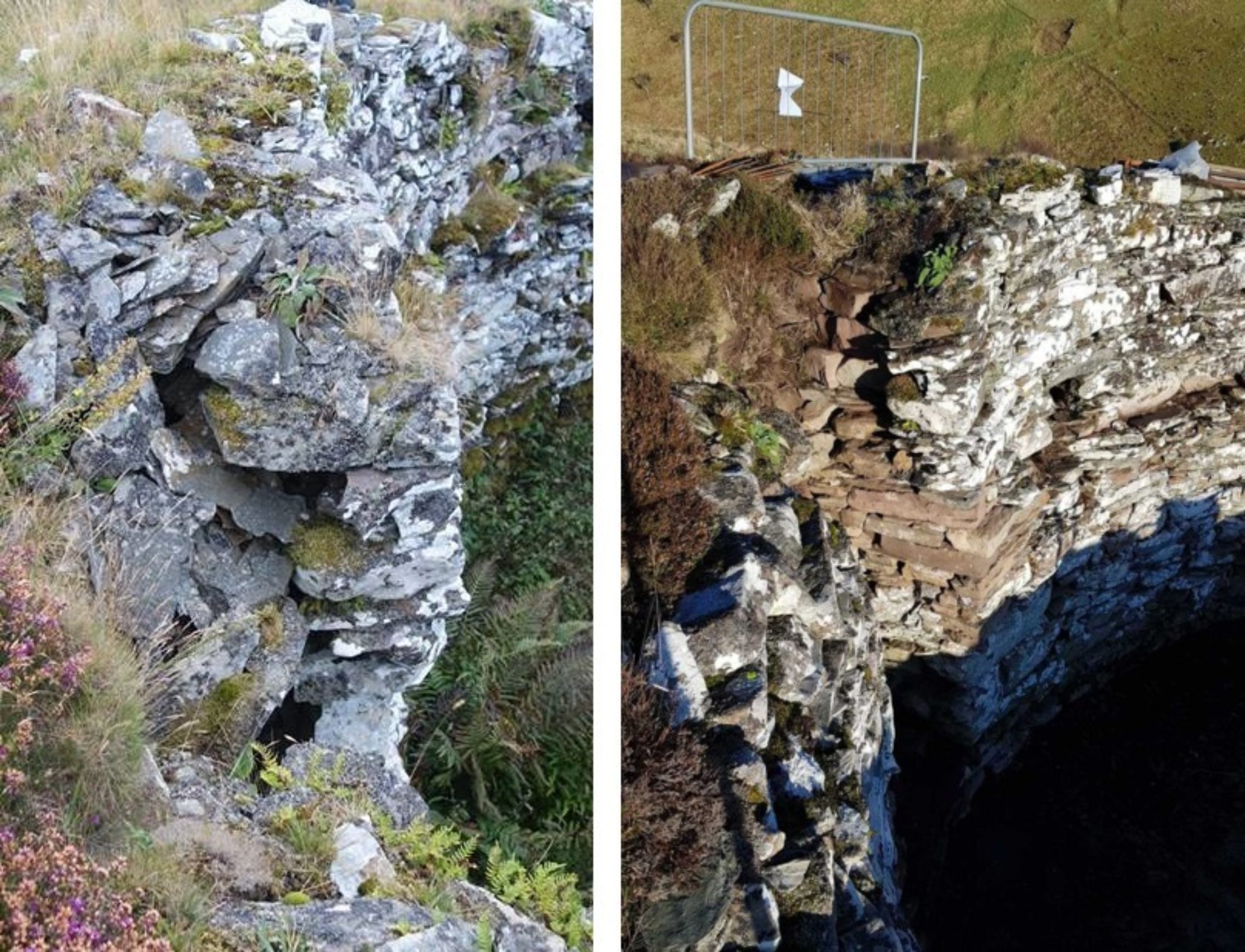
Looking down on the stairwell entrance, before and after
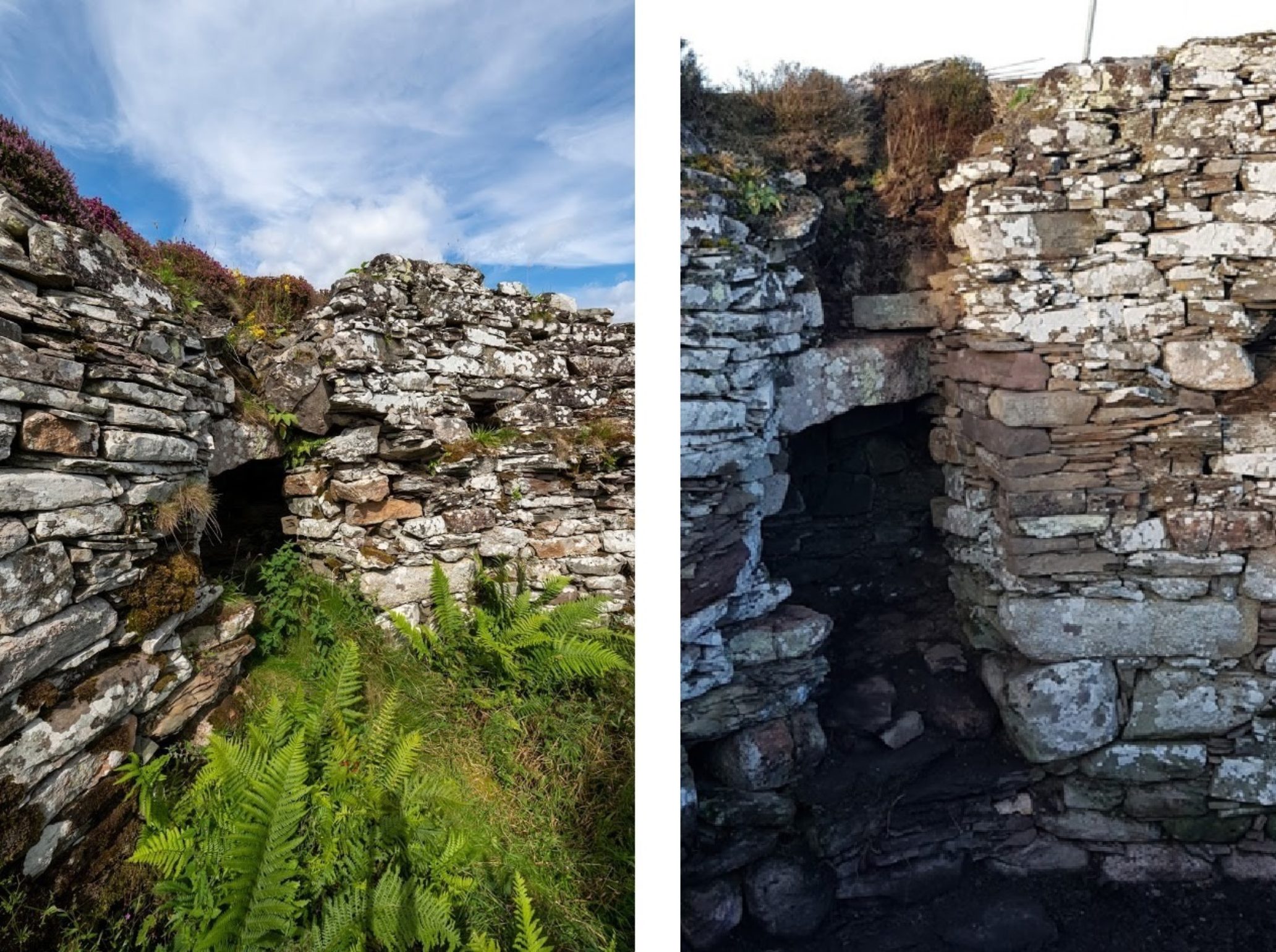
The stairwell entrance on the ground floor, before and after
So, that's where we are at currently with the conservation of the stonework - it's practically finished - all that is required now is laying some geotextile and gravel within the floor. This will really give the broch a nice aesthetic look, as well as it making it safer underfoot: see the below images from our previous conservation work at Achvarsdal Broch!
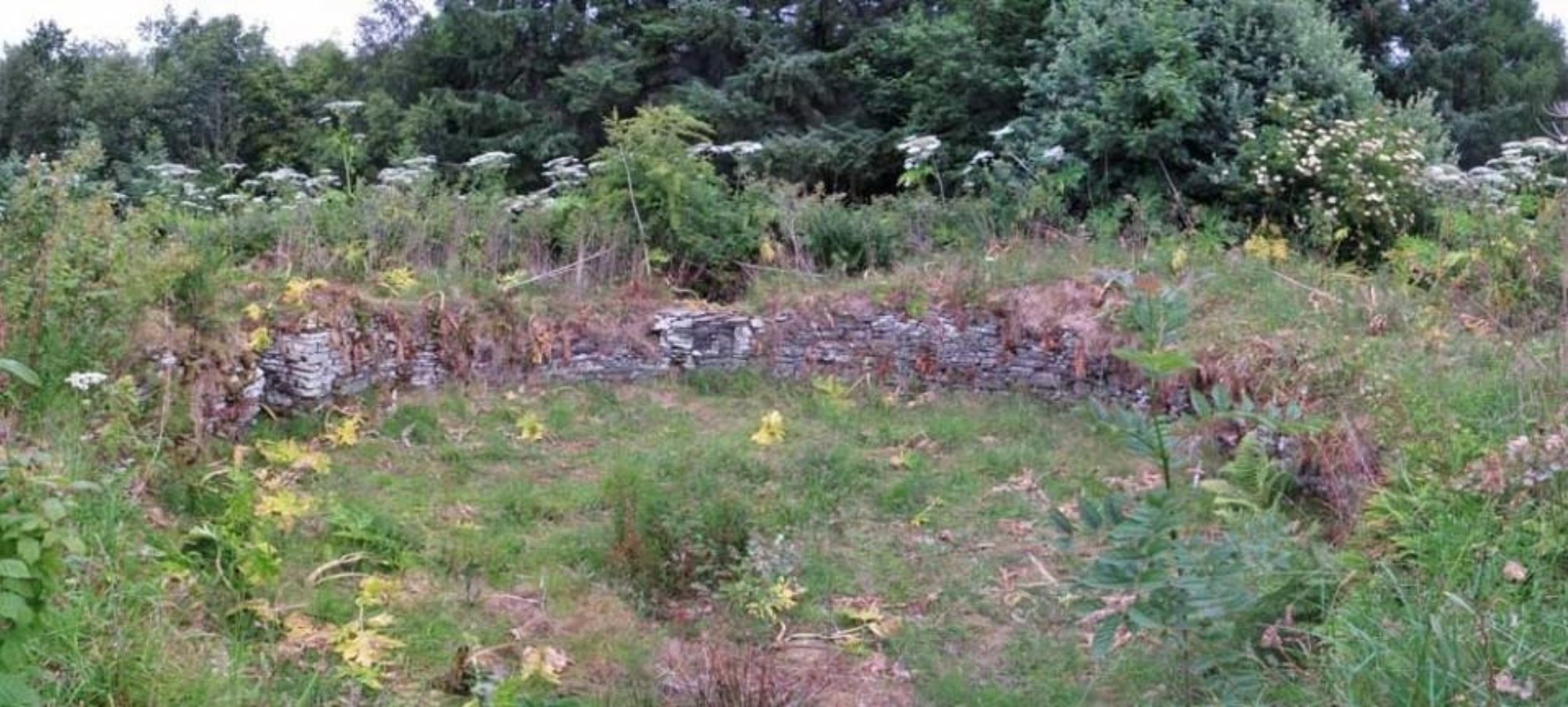
Achvarsdale Broch before - filled with dangerous giant hogweed and a muddy path (Image from The Modern Antiquarian)
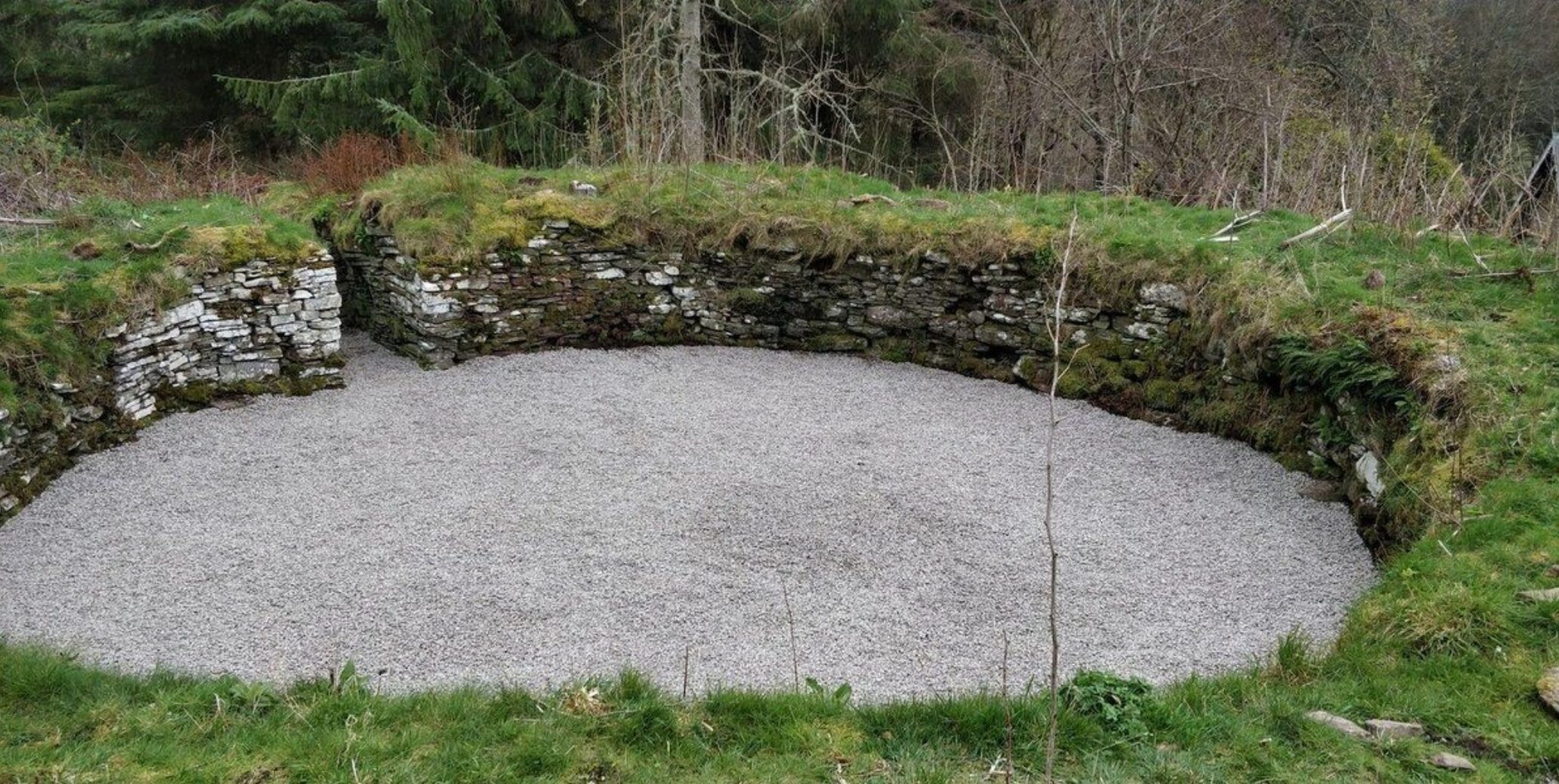
Achvarsdal Broch after we had completed the access improvement works
The gravel is currently in a pile close to the broch, waiting to be shoveled in. And look how much fun it was!
Paths, Parking and Pointing People to our Project!
Meanwhile, Highland Conservation LTD have been busy creating a walkable path from the A9 down to the broch, working in all weathers and across difficult terrain.
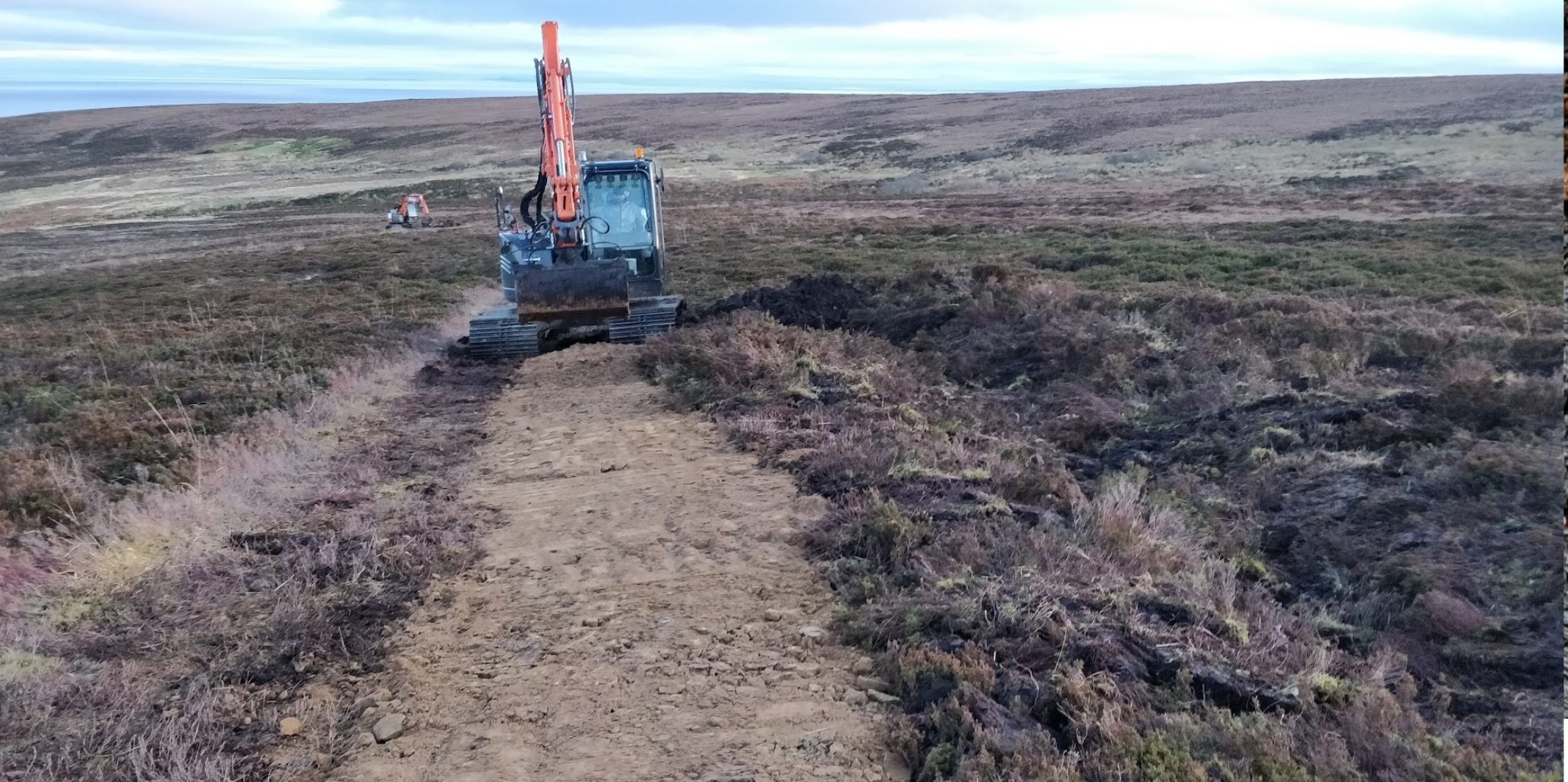
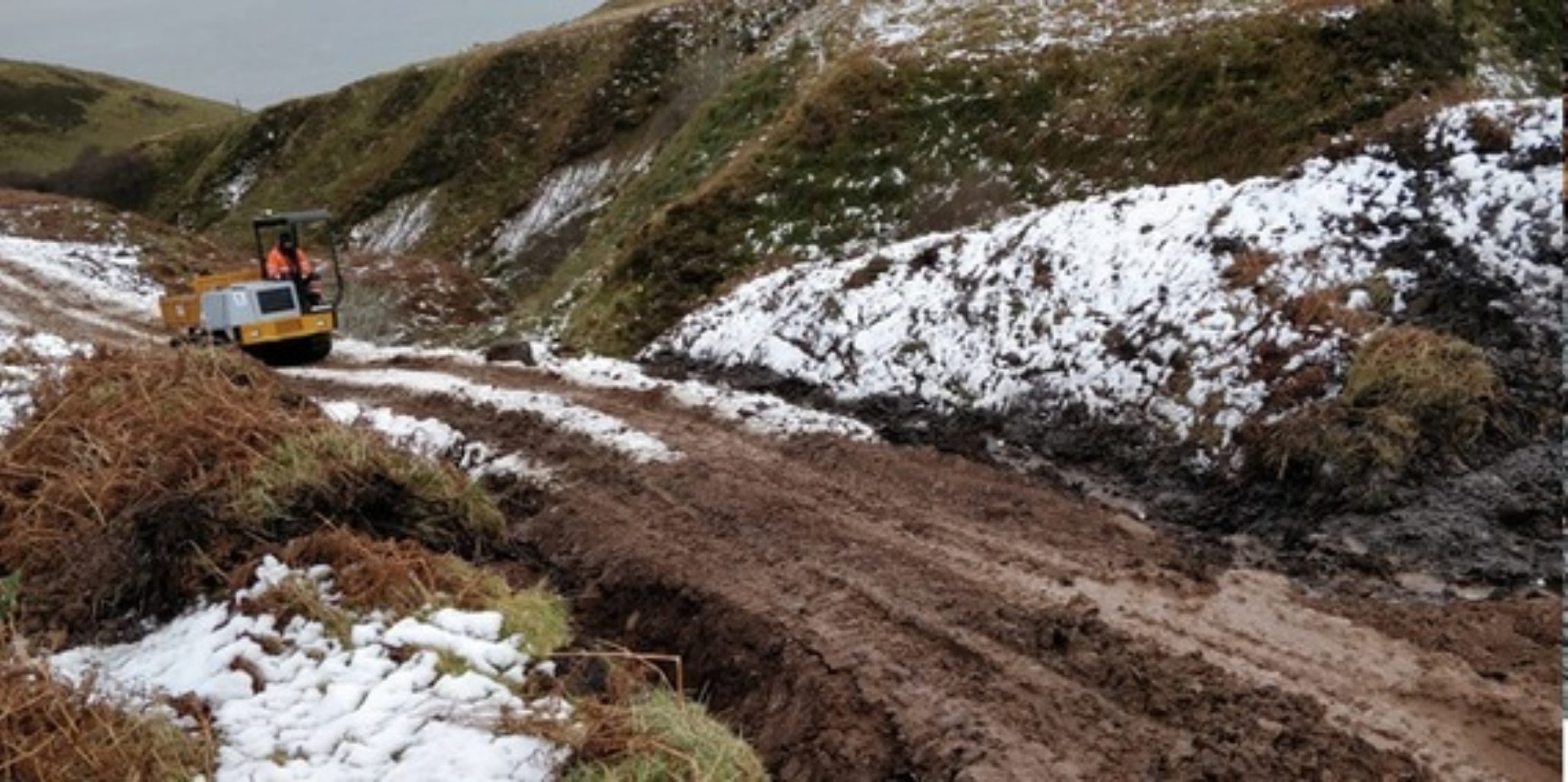
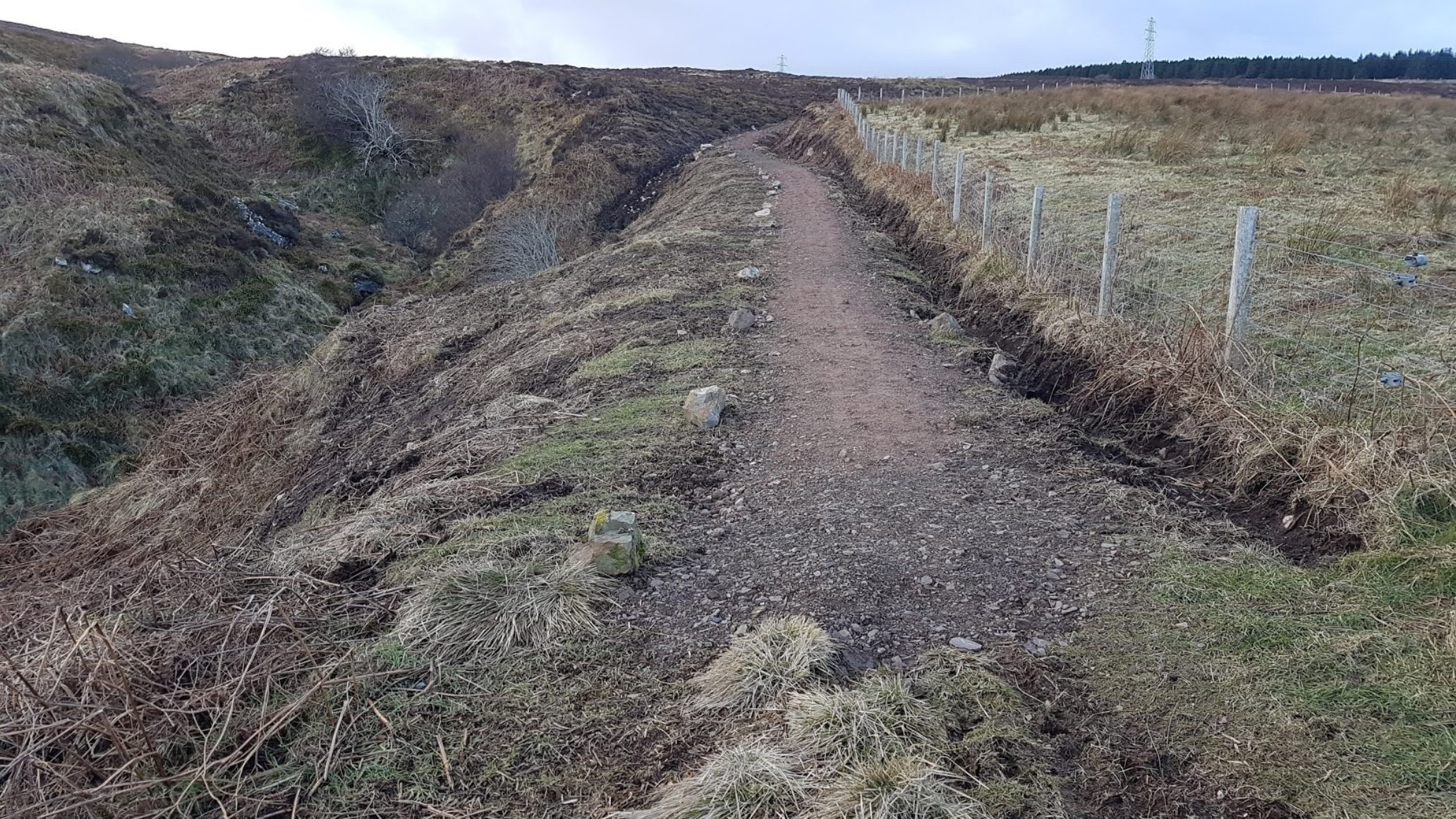
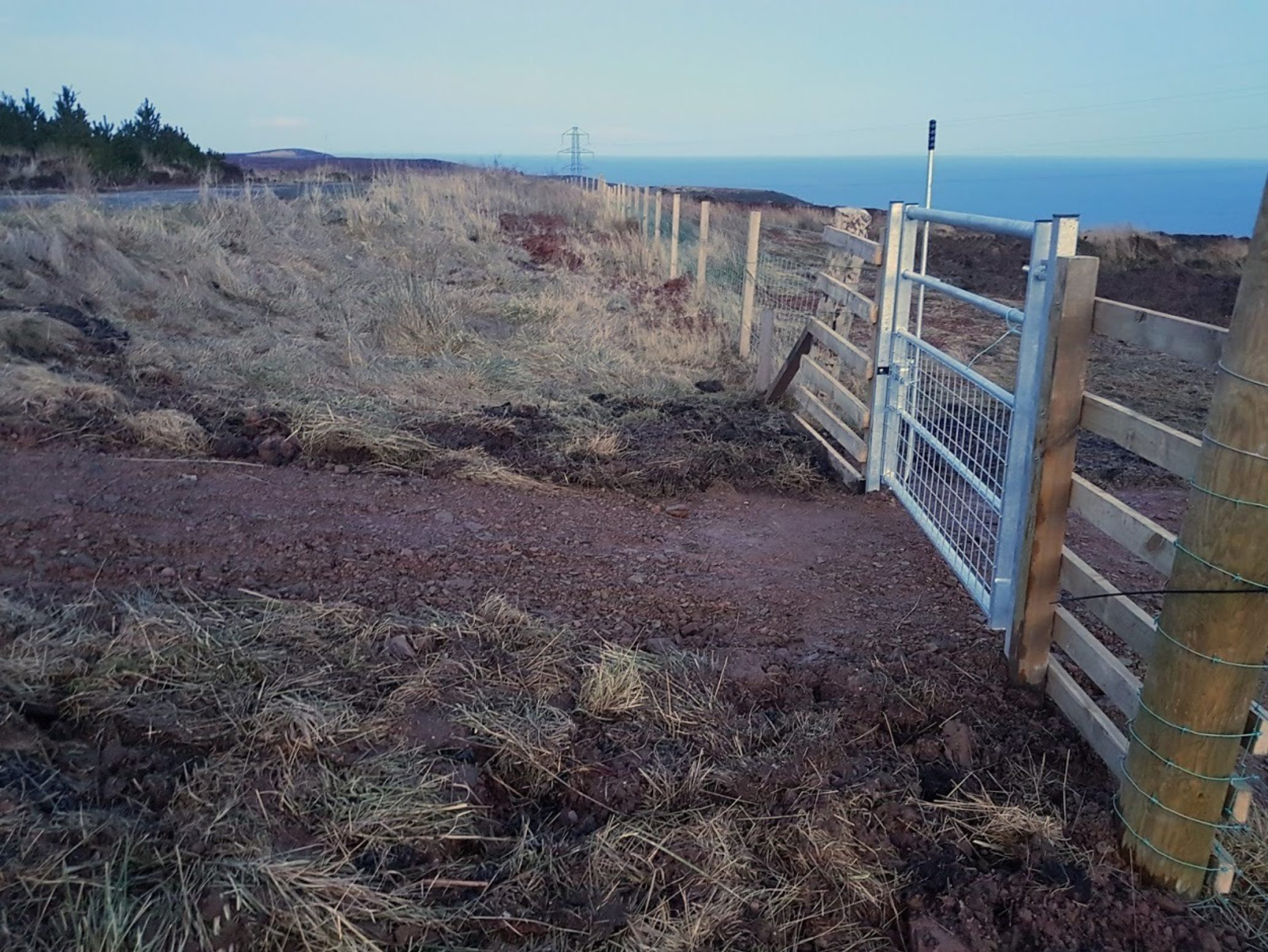
The path is looking great - if we say so ourselves, we even have a lovely wee gate. In the next few months we hope to install some benches (it is a bit of a climb!) as well as four lovely interpretation panels which chairman the Robin Herrick has designed, which discuss the geology, history and archaeology of the area.
Finally, we have more or less finished the car park (below). A huge thank you to Dawn Mackay for her work arranging and sorting out the planning applications and logistics of this task, as well overseeing the path works, too. The car park was created RJ Macleod, who also re-tarred the old side road, at no cost to us! Huge thanks to them too.

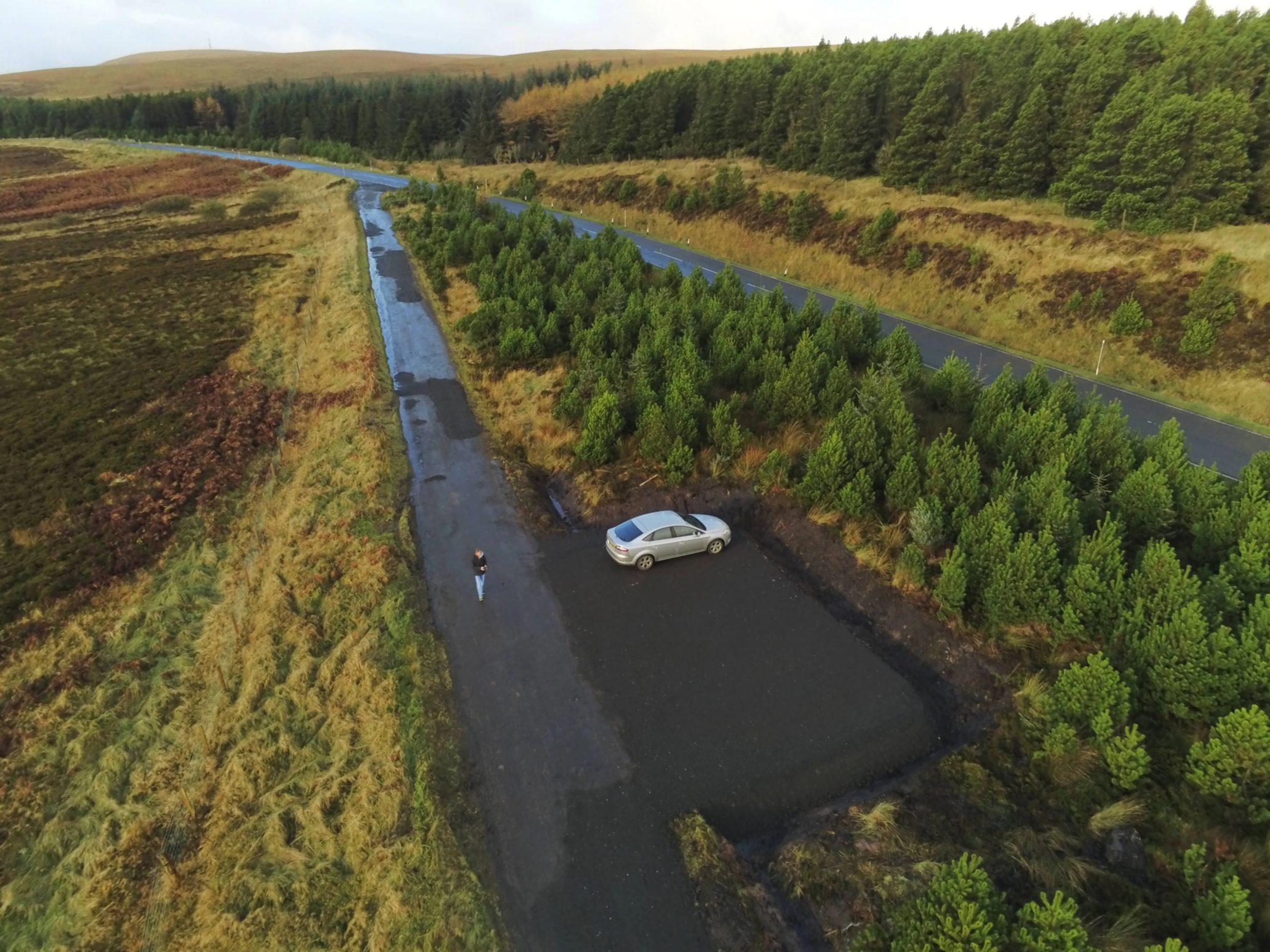
Just FYI, we've also infilled the ditch around the carpark with chip (see below). So don't worry about doing yourself a mischief.
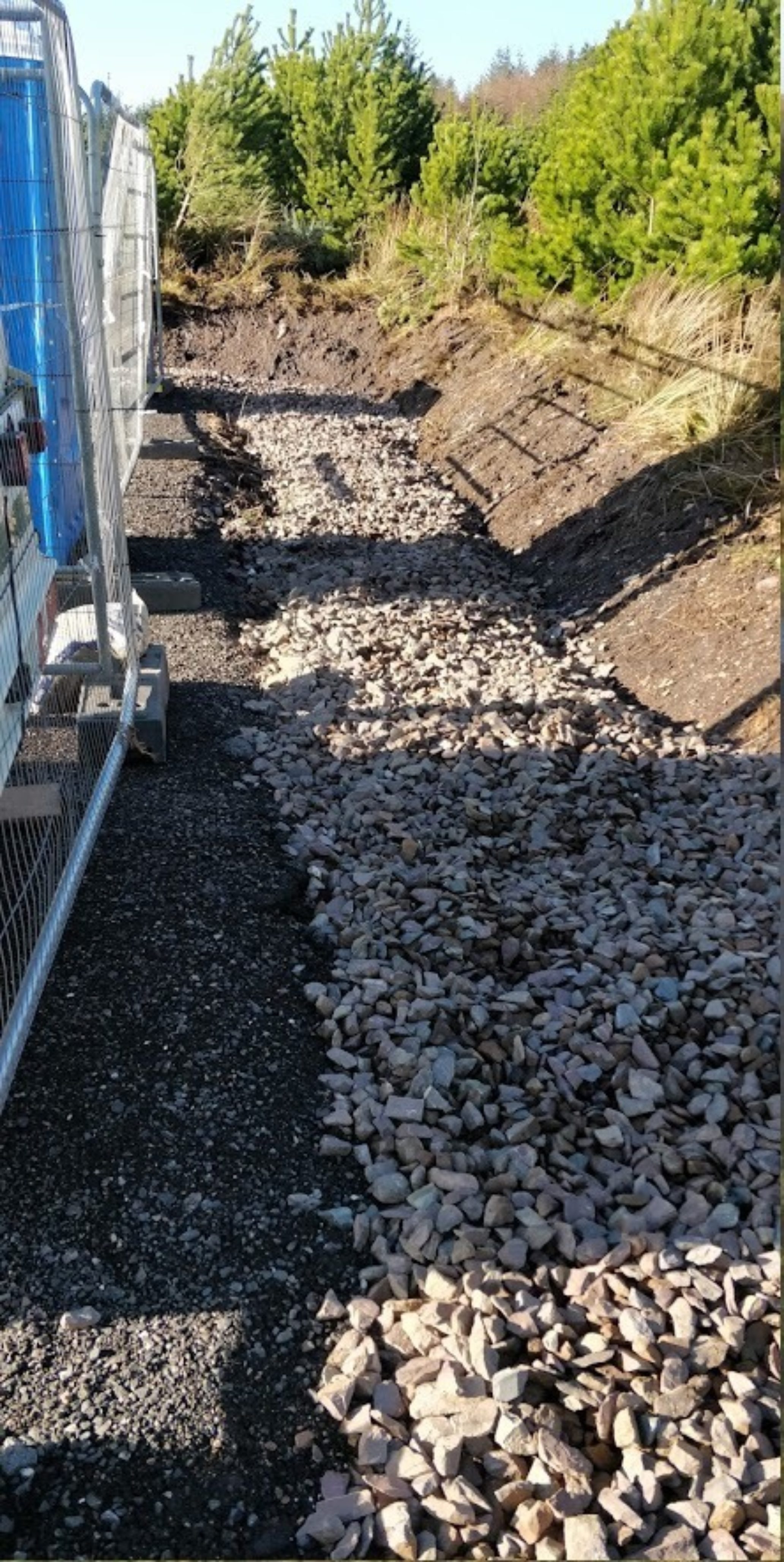
With regards to telling people where they can find this broch, we are 'in conversation' about the road signage.
And that brings us to an imporant point. WHY are we doing all of this?
Well, Ousdale Burn Broch is undoubtedly one of the archaeological gems of Caithness. It absolutely deserved to be consolidated and protected for future generations - the archaeology of Caithness has been somewhat tampered with by several dastardly antiquarians, such as Frances Tress Barry.
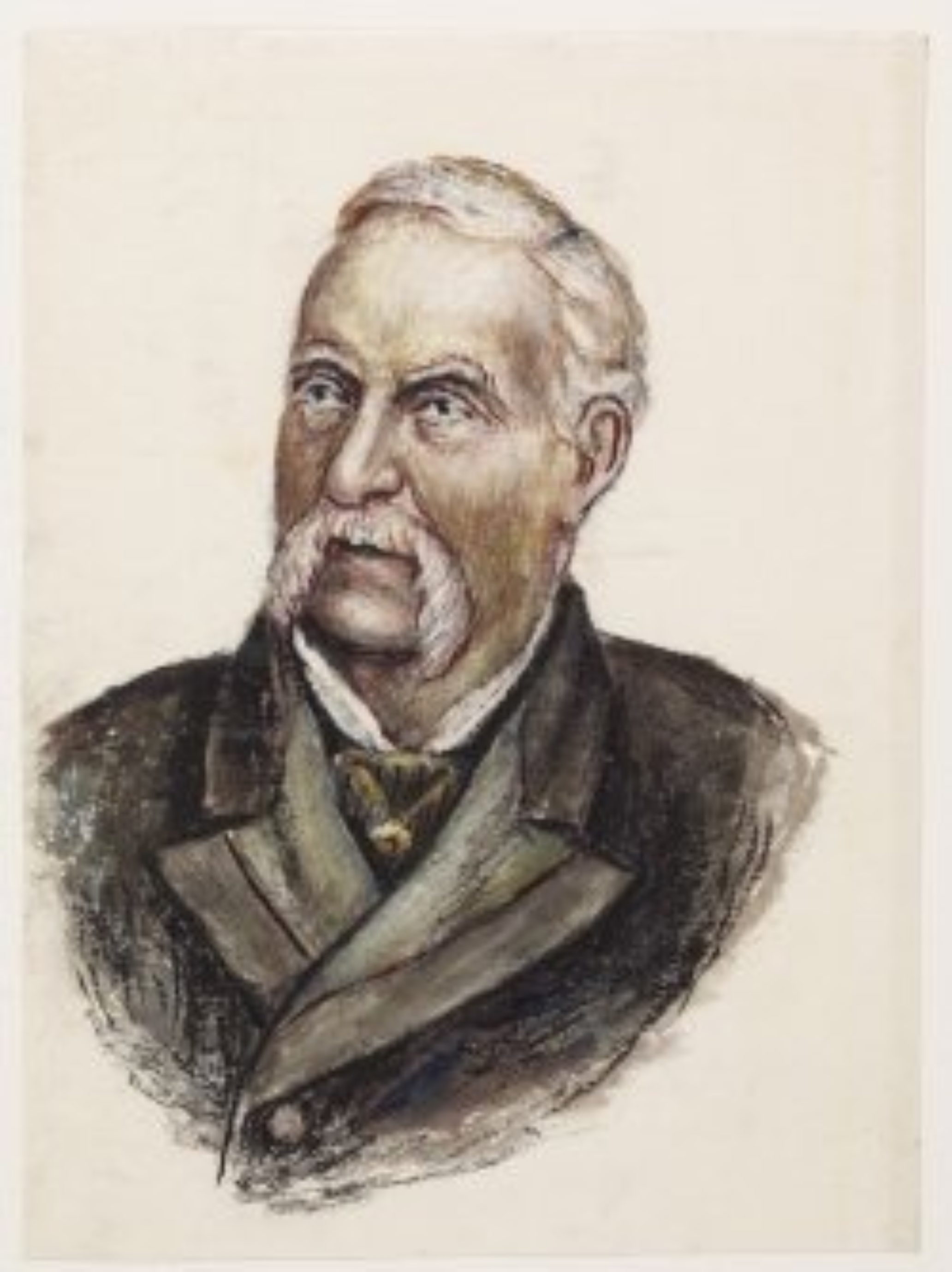
Portrait of Tress Barry by his accomplice, John Nicolson - my personal, local hero! Learn more about Nicolson here.
This man was responsible for the excavation of around 14 brochs in 14 years (!!) during the turn of the last century, and many of these brochs were utterly gutted by his somewhat crude excavation techniques, such as poor old Keiss Broch, which was been nearly obliterated in his excavations.
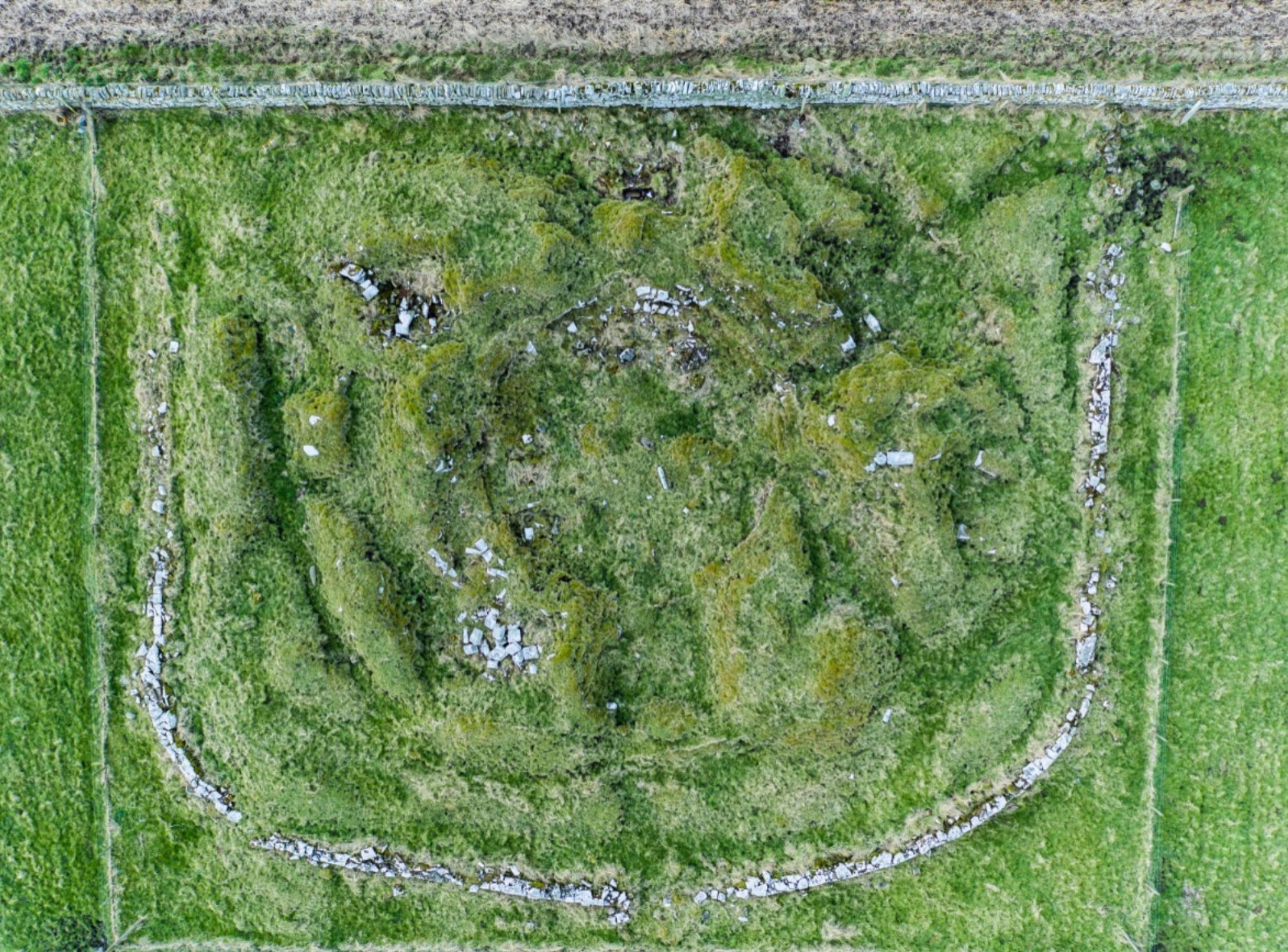
Keiss Broch (Photo by Highland Drones)
And although James Mackay certainly wasn't the worst, his buttress wasn't up to task. I mean, his fell over after only 100 years, whereas the rest of the broch has been standing for around 2,000 years!
So, we think Ousdale deserves a second chance.
On top of that, however, is an even more important reason. Ousdale sits only a mile or so away from the border of Caithness. For anyone entering the county from the south along the A9, it would be the first attraction they would see - first impressions count for a lot, and what a fantastic welcome to the 'Home of the Broch' it would be - especially for all those North Coast 500-ers!
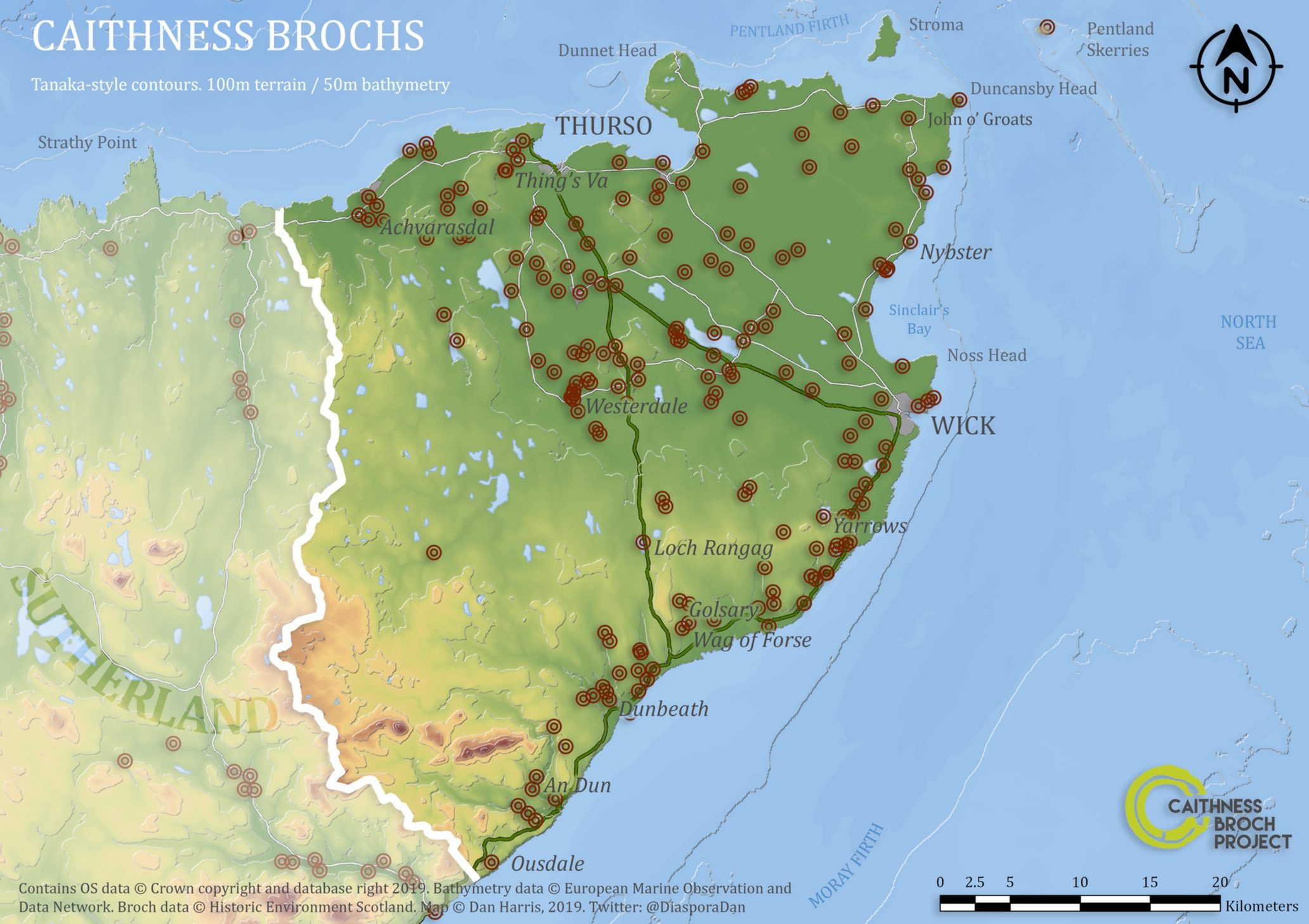
With more brochs than anywhere else in the world, Caithness truly is 'The Home of the Broch' (Image by Dan Harris of Brick to the Past)
Caithness is going through a difficult period with the downturn and decommission of it's main employer, Dounreay Nuclear Power Plant. It is thought that within the next 20 years, Caithness could lost over 20% of its population. The county needs to address these issues, and seek possible alternatives to help mitigate these issues, and look for new ways to sustain and support itself.

Highland Council Population Projections
We believe that heritage tourism is one such way to ensure Caithness becomes economically sustainable, and continues to be a safe, enjoyable and exciting place to live, work and visit. The promotion and development of the county's rich archaeology is just one of the ways we hope to help make Caithness better for everyone.
So, we're excited to conclude our project - hopefully by the end of summer, Caithness will have a brand new archaeological tourist attraction. We'll keep you posted as best as possible. If you'd like to help, why not join as a 'Friend' of the project? It's free and only takes a minute to sign up. Join here: Become a Member or Friend.
But for the meantime - keep safe and healthy, wash your hands. You know the drill by now. Stay at home, relax: Caithness will still be here after all of this is done. We just need to wait for all of this to blow over!
